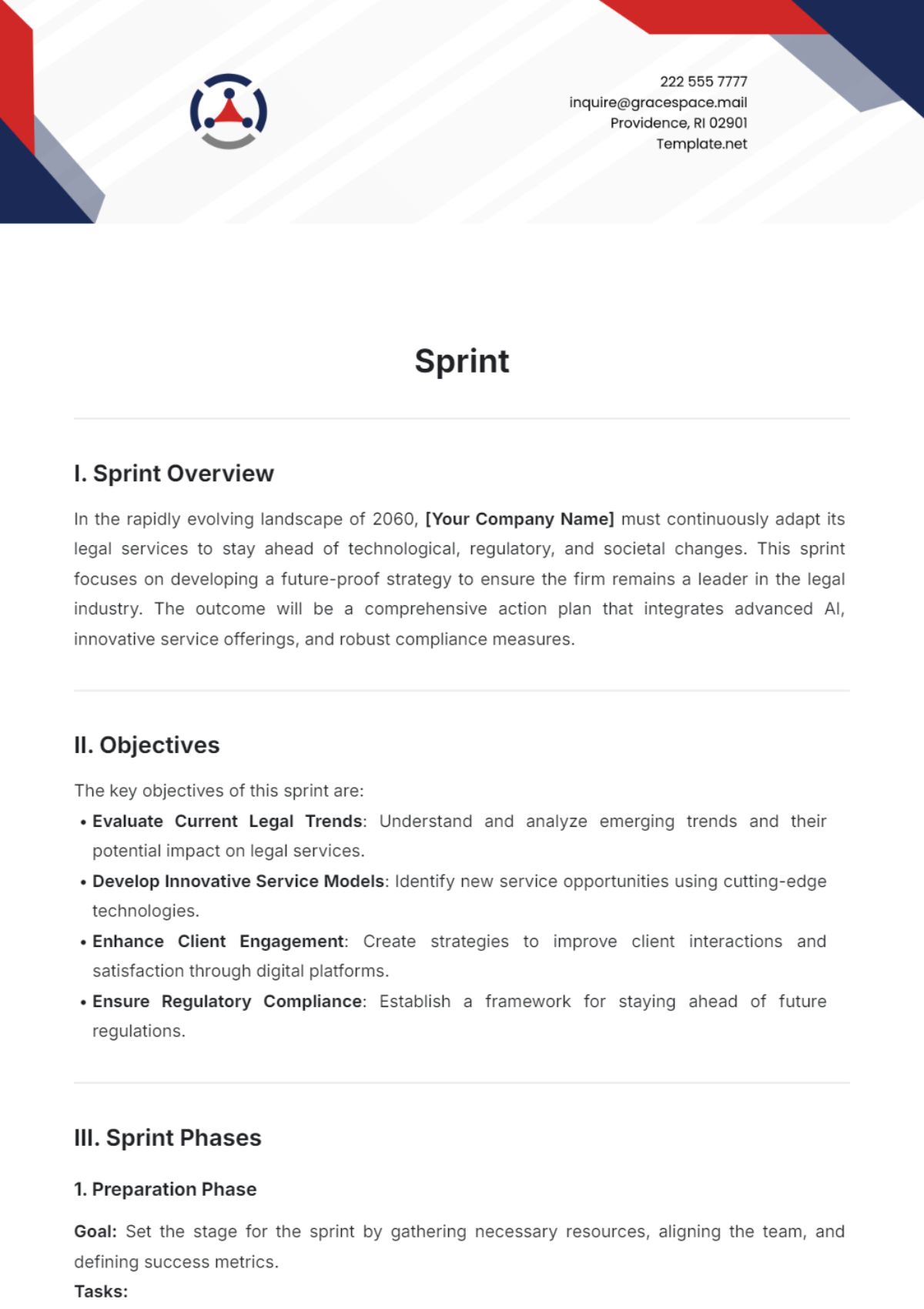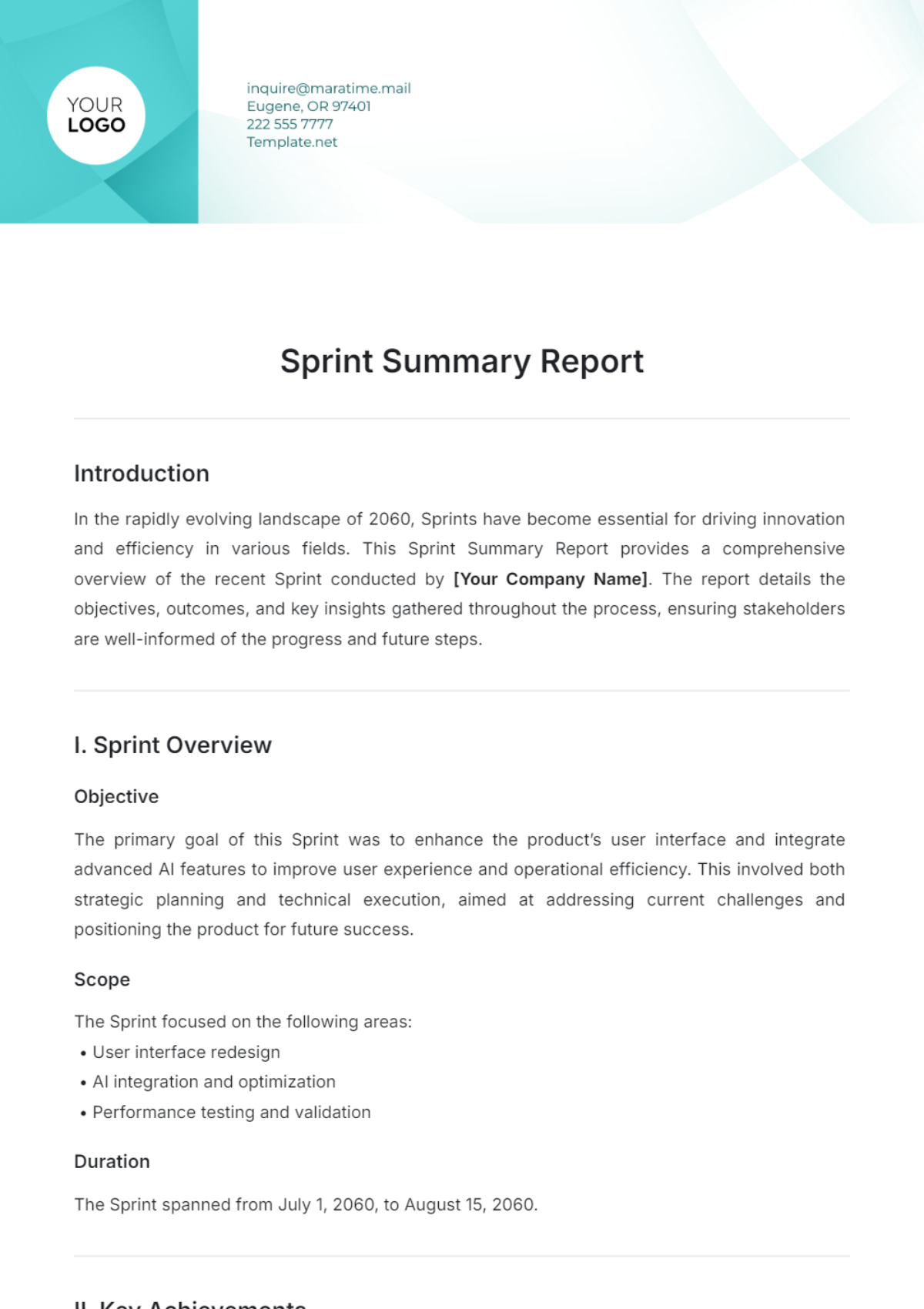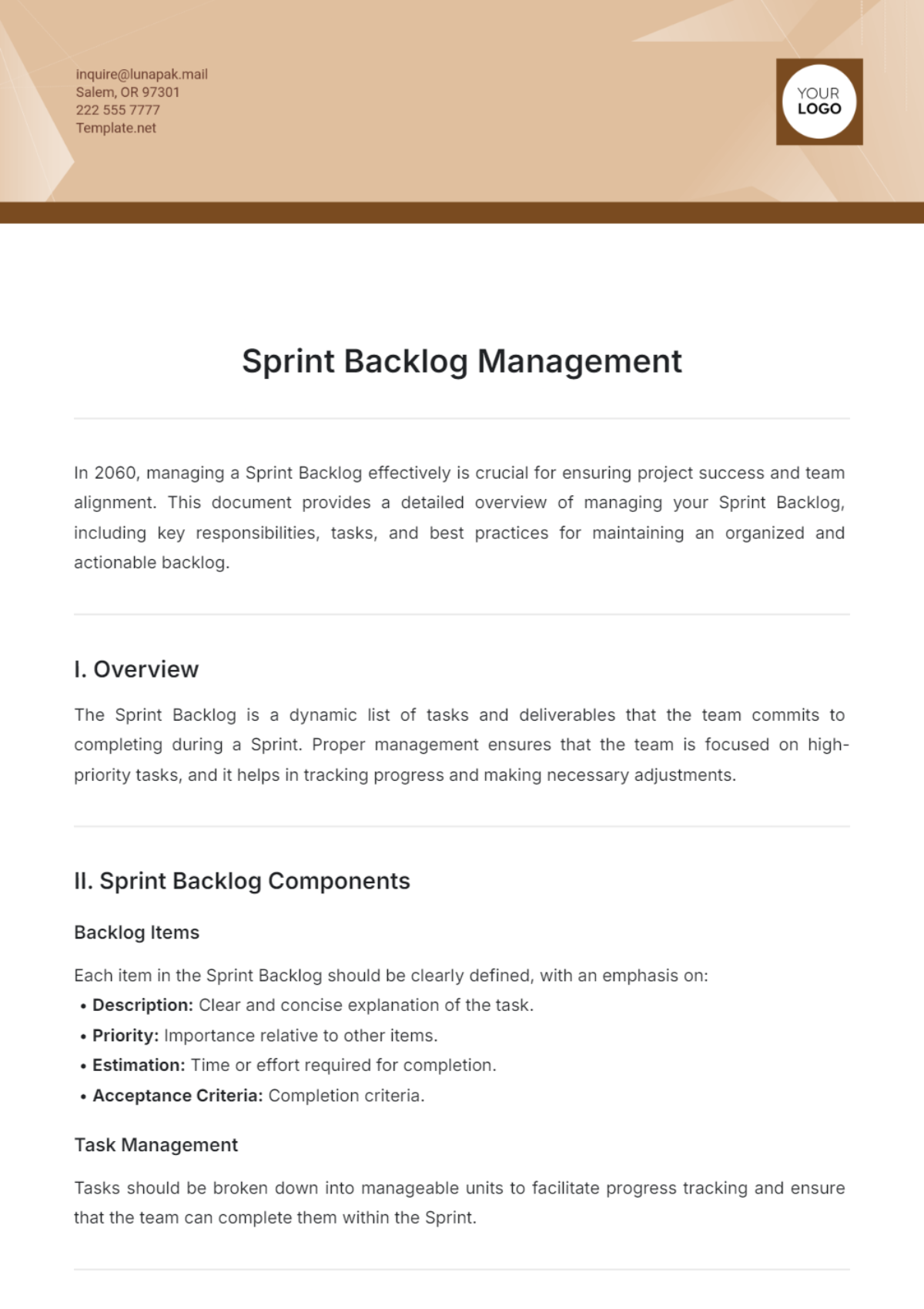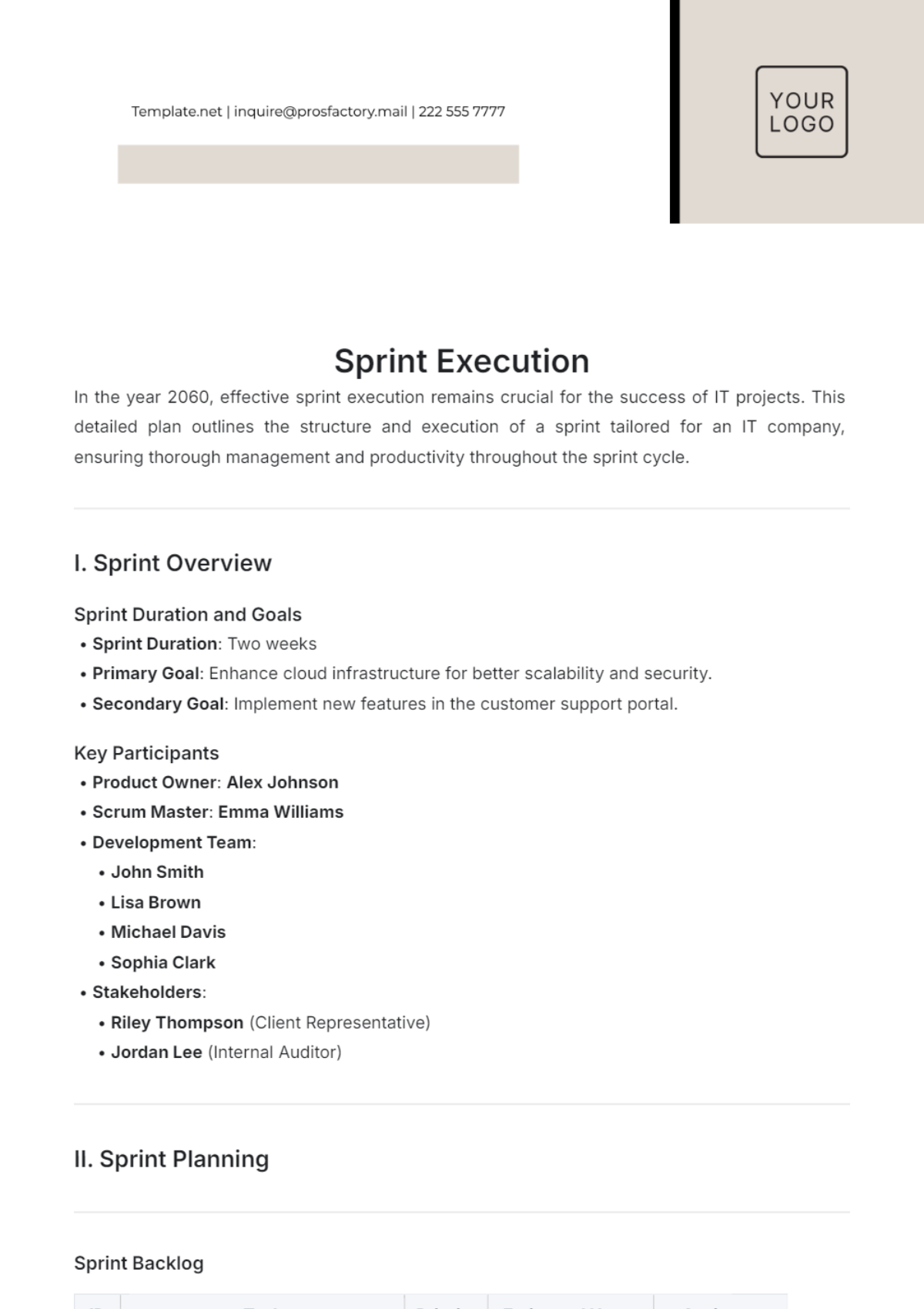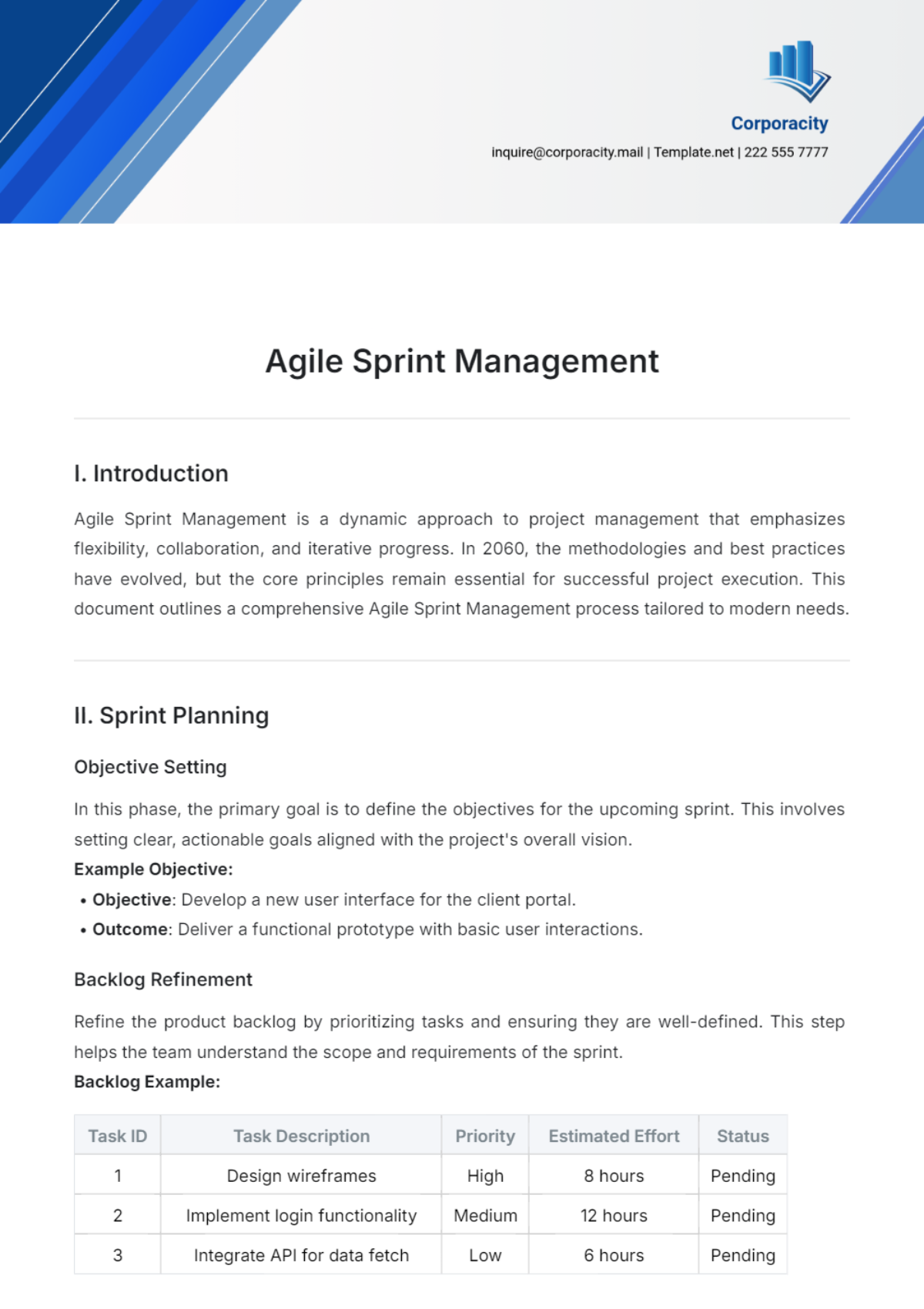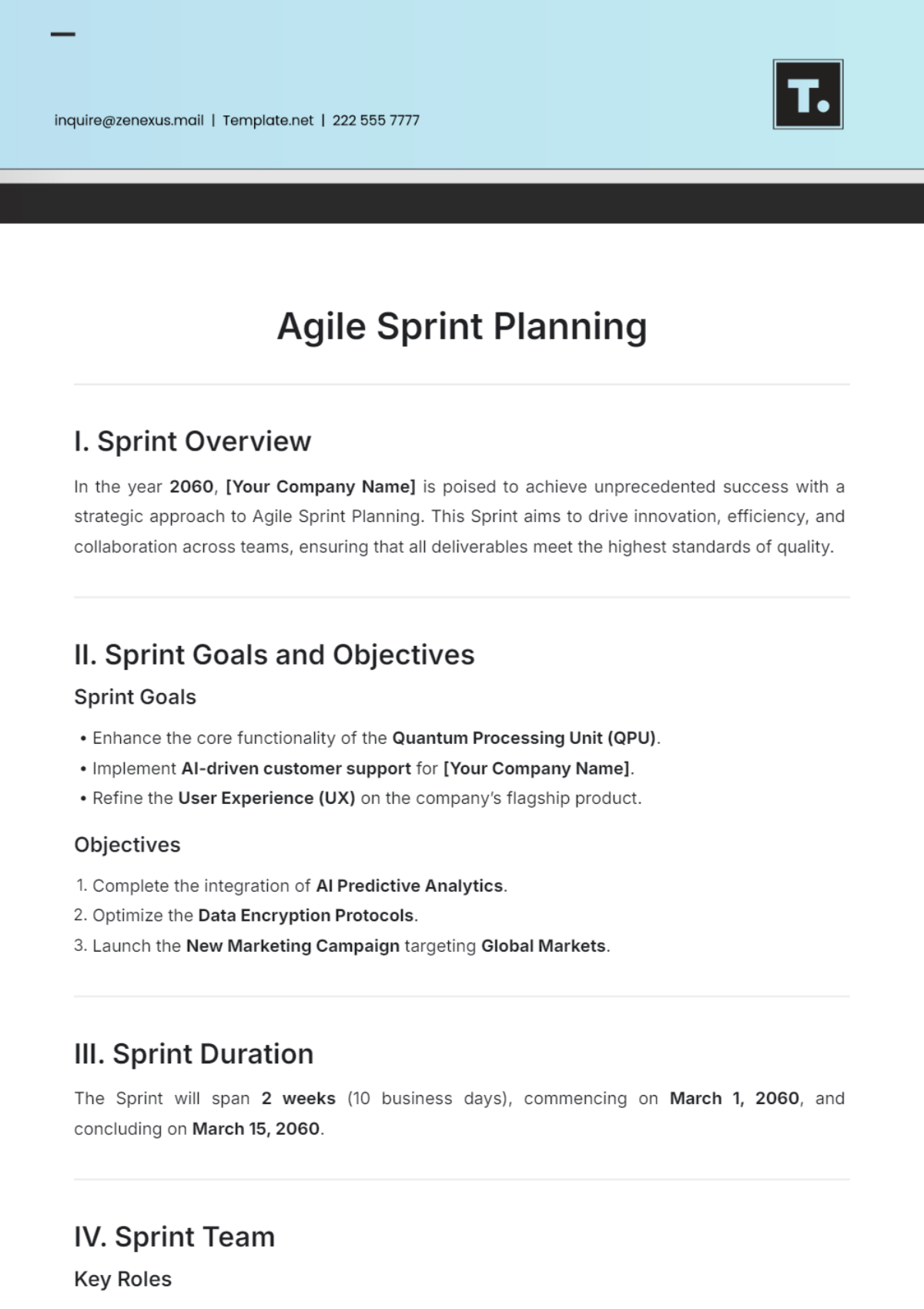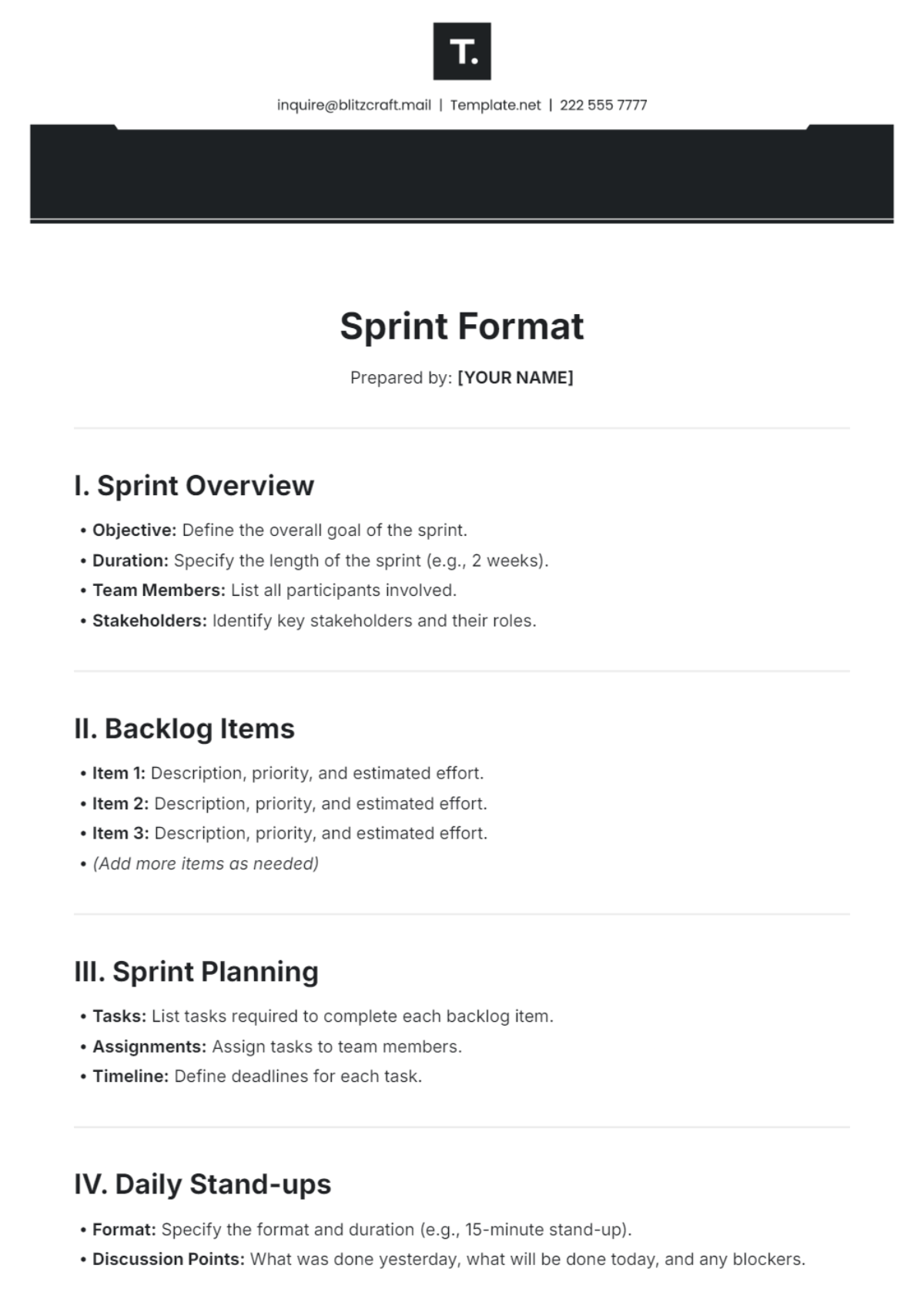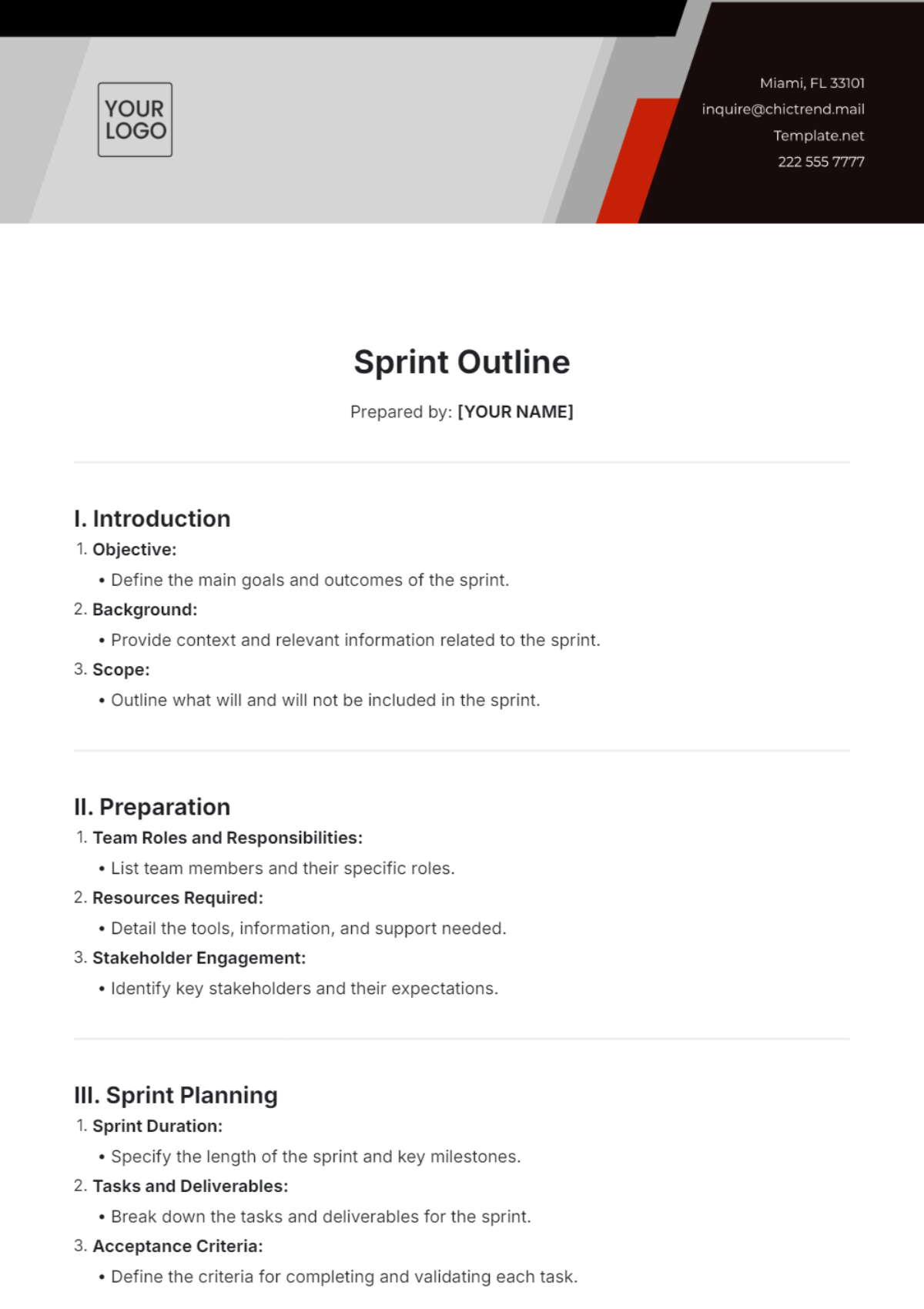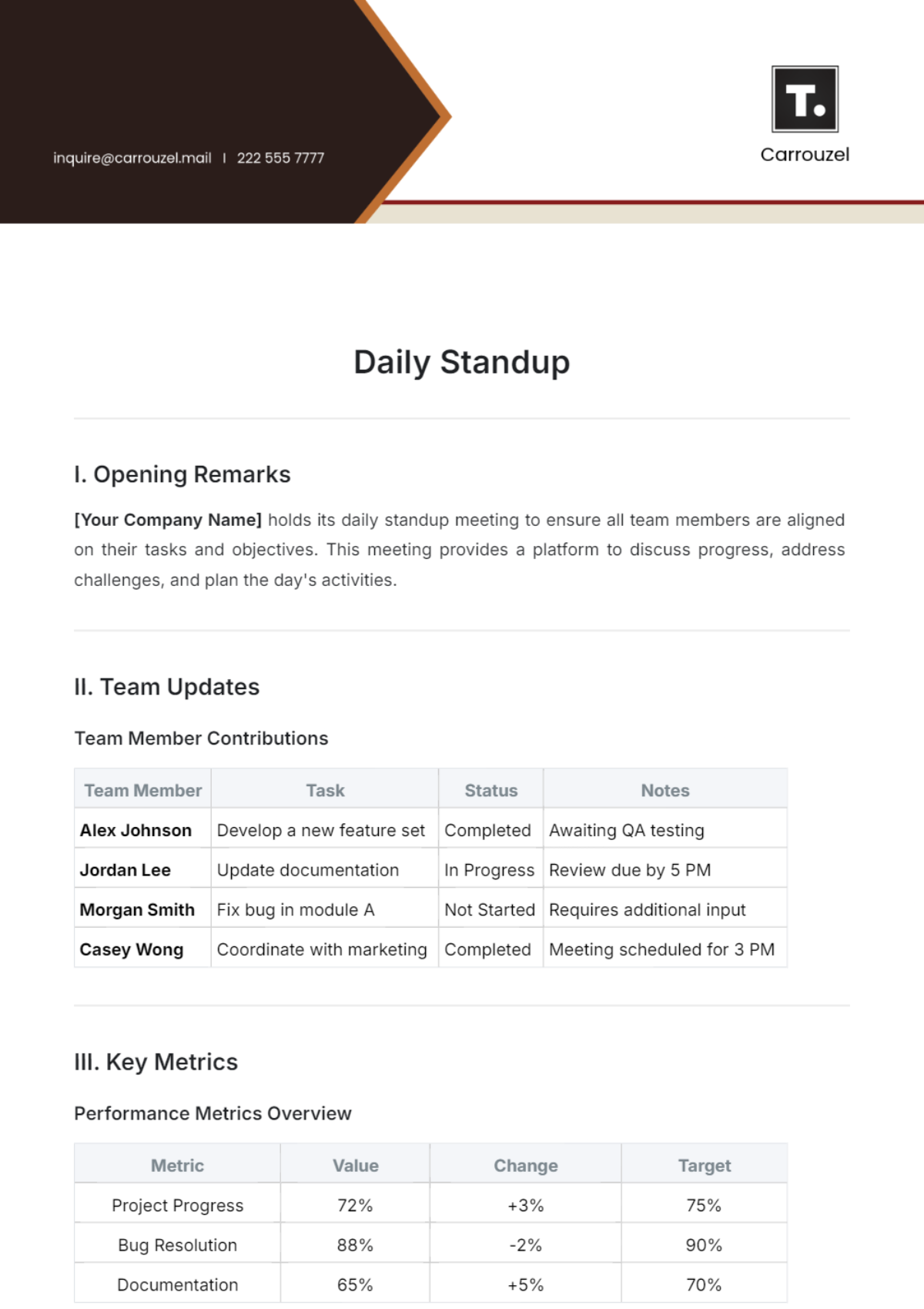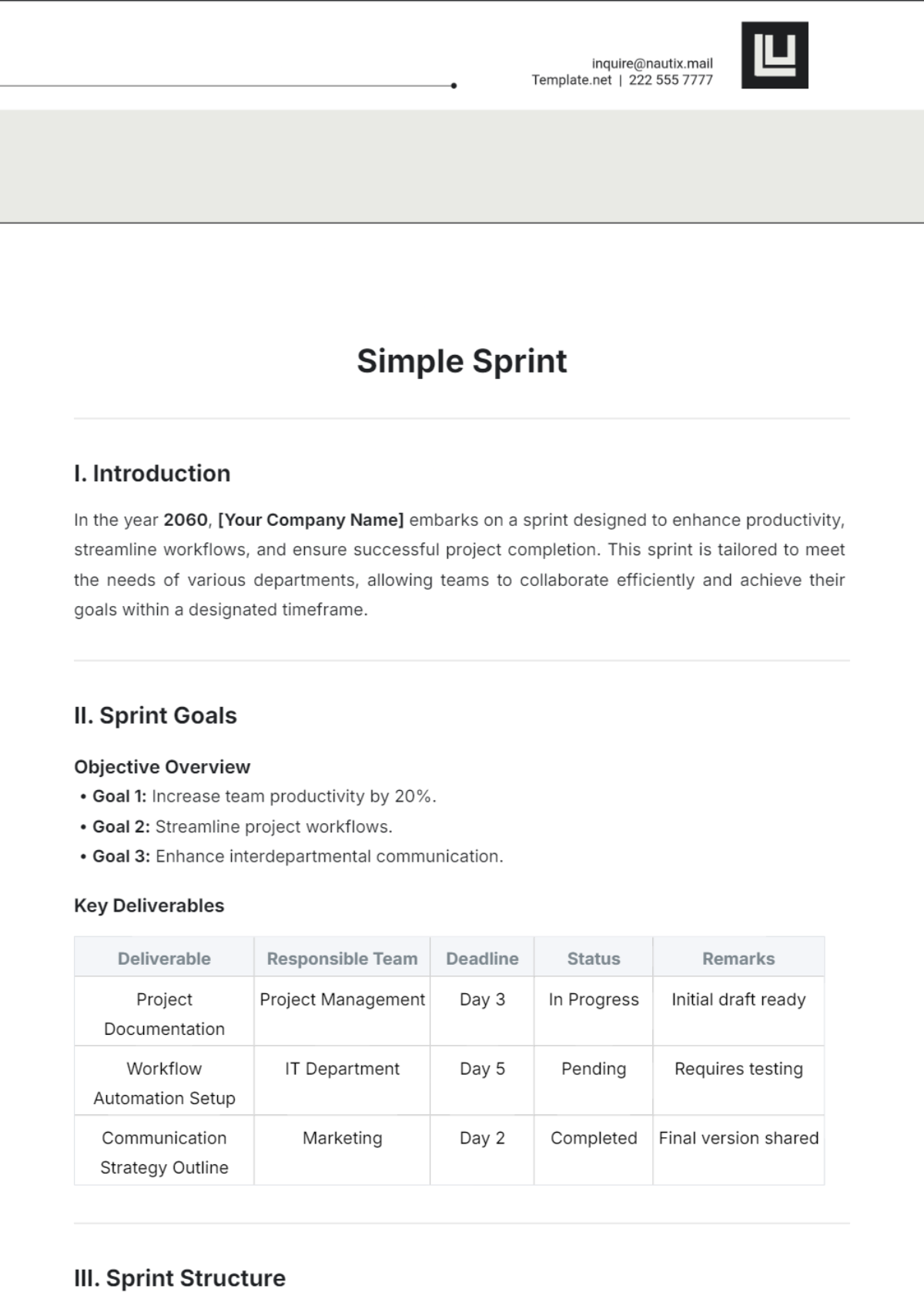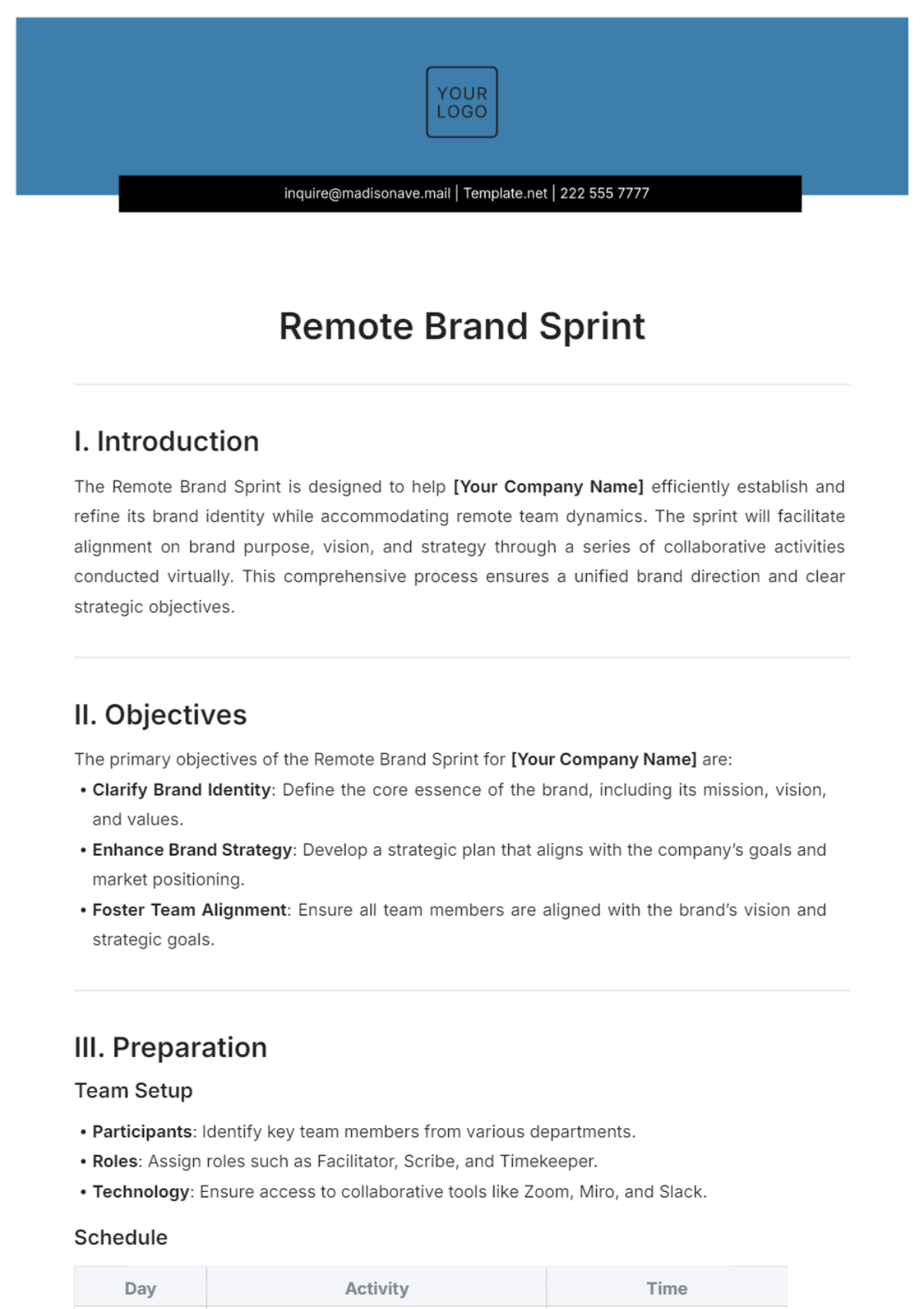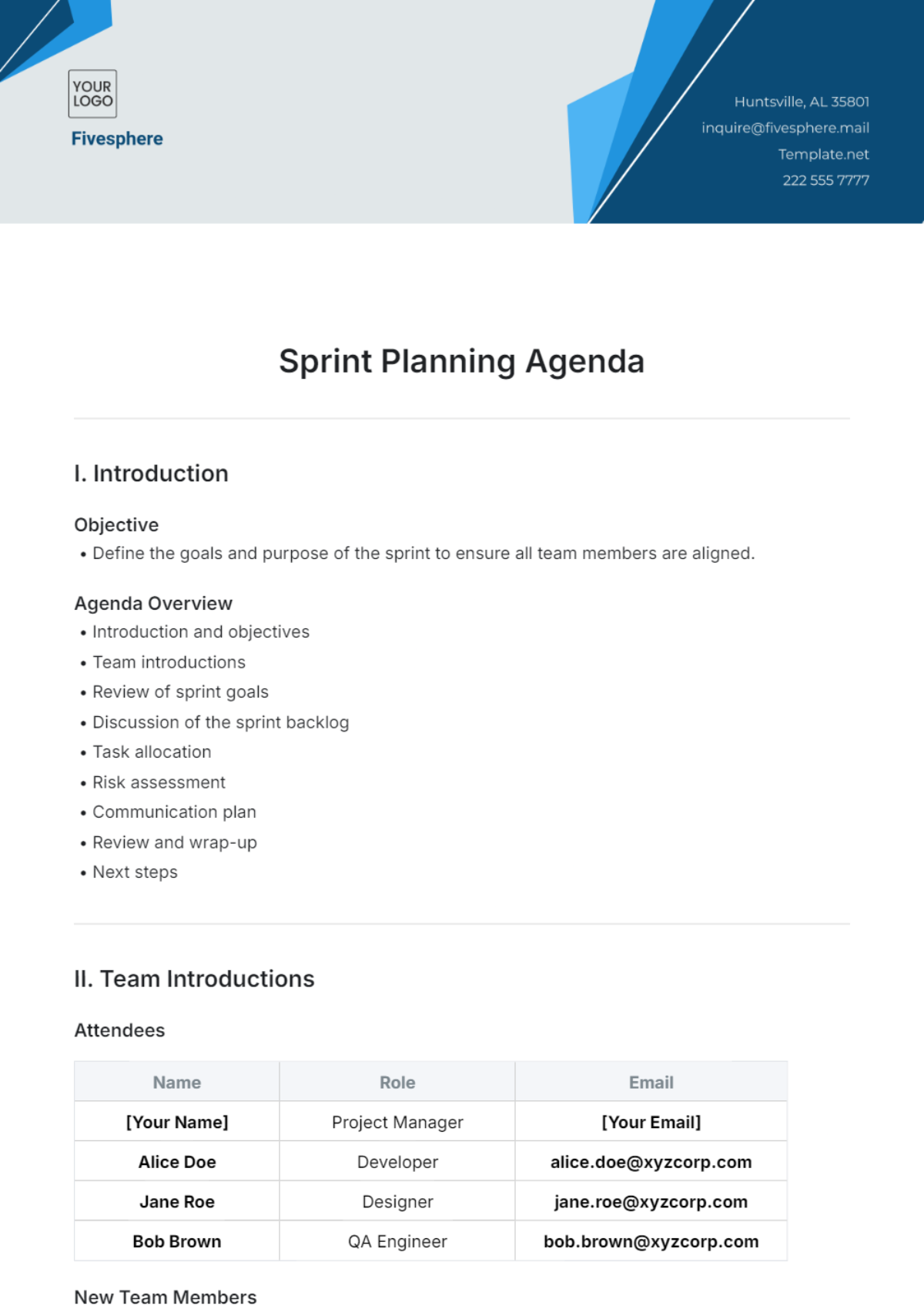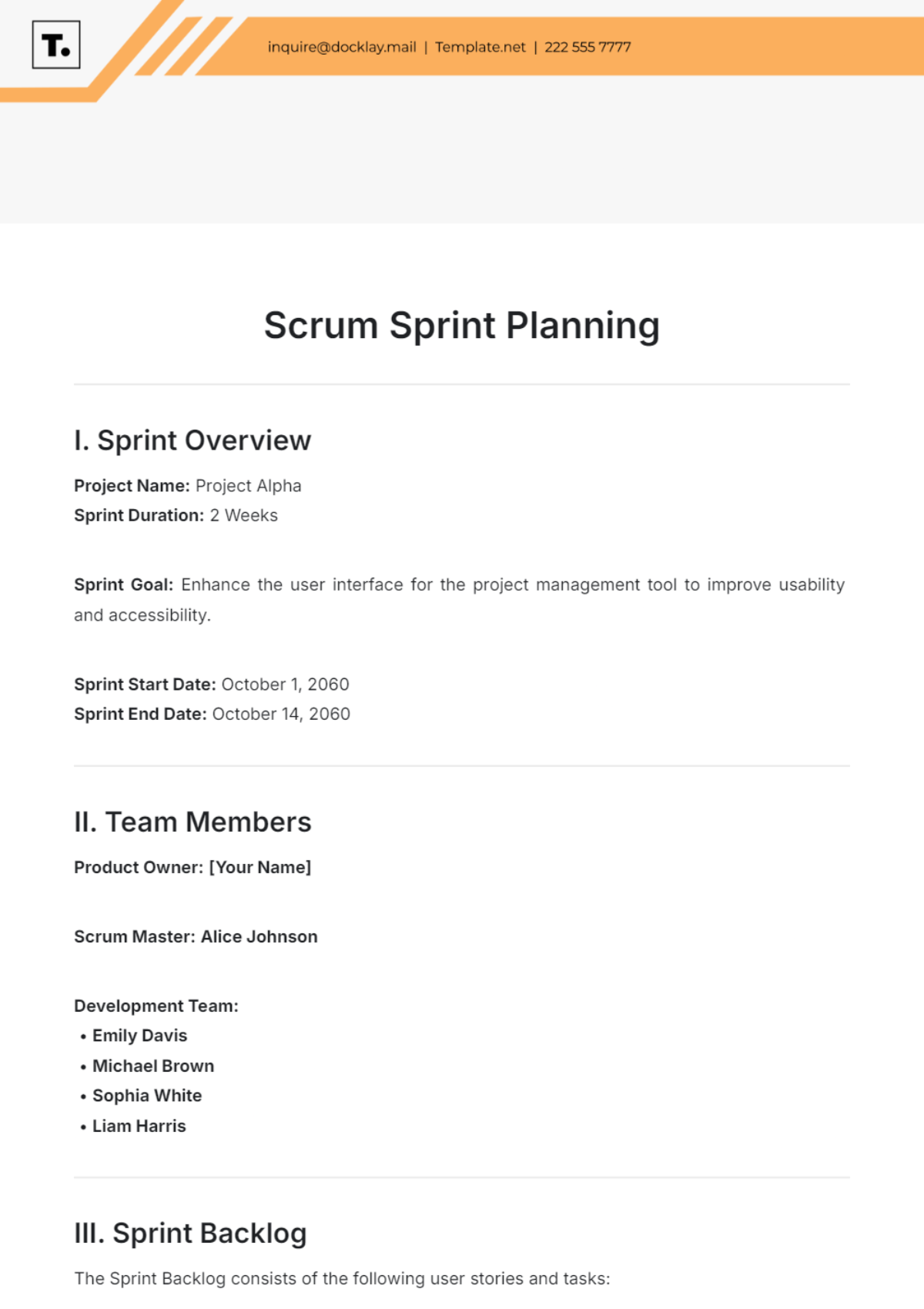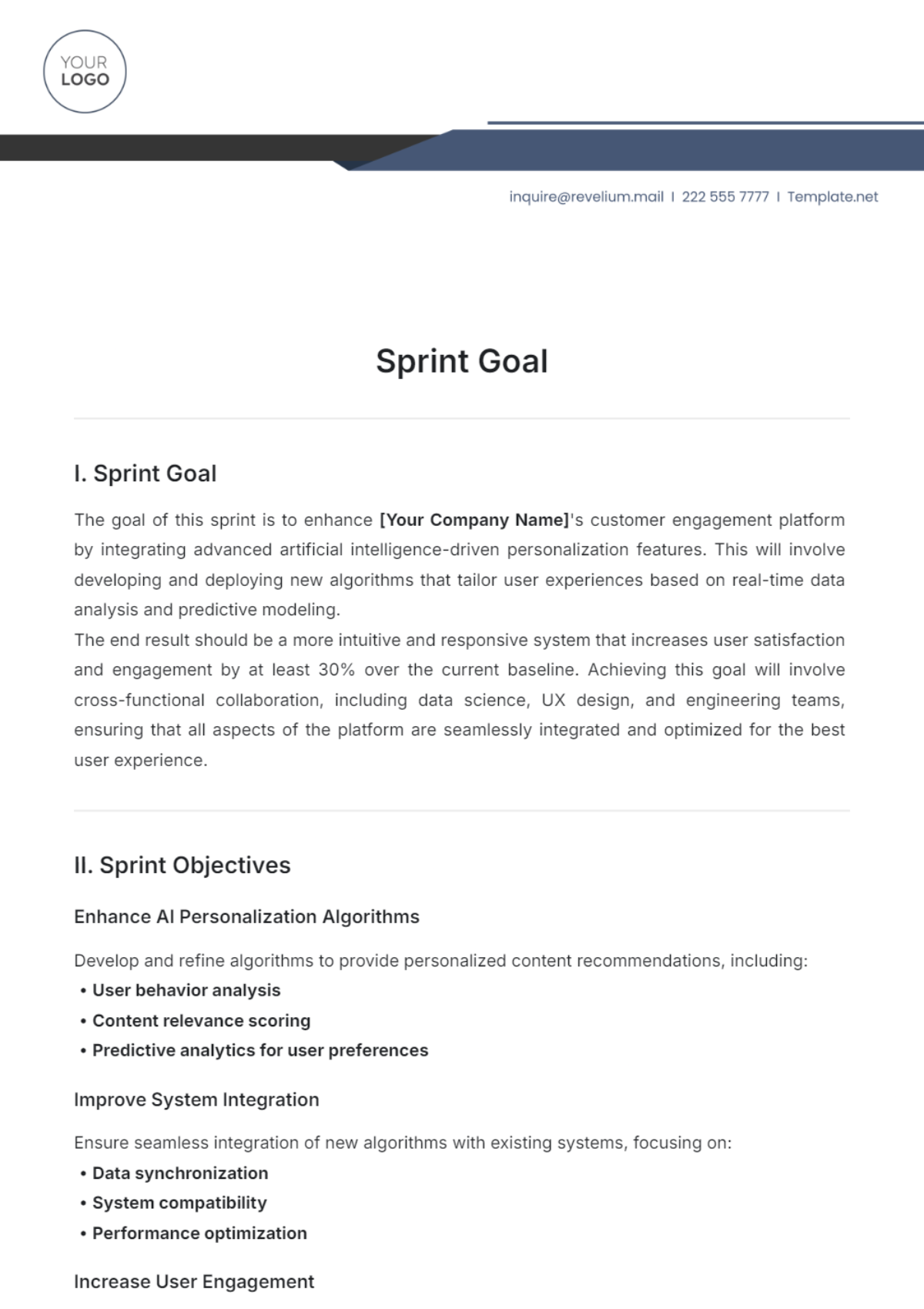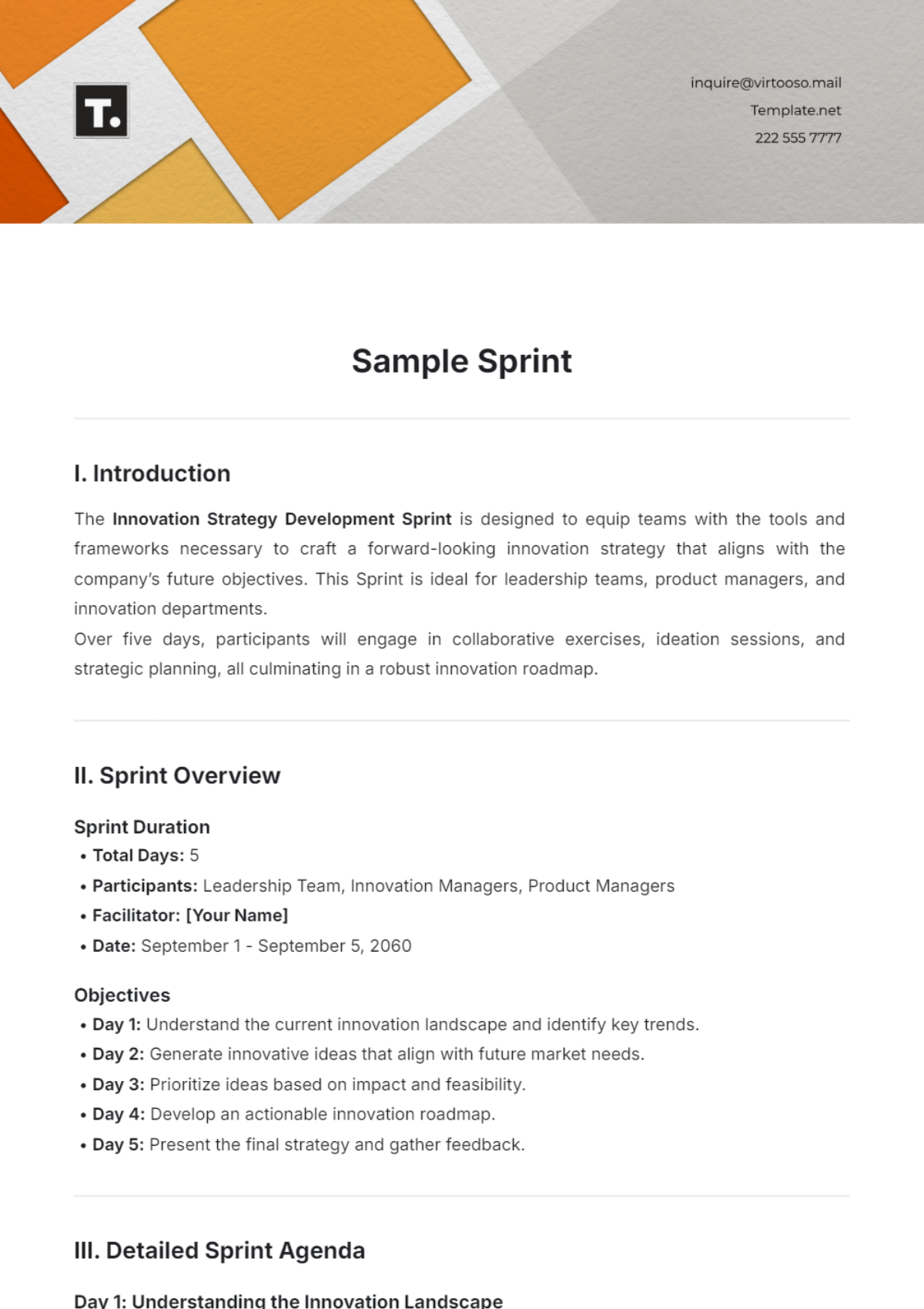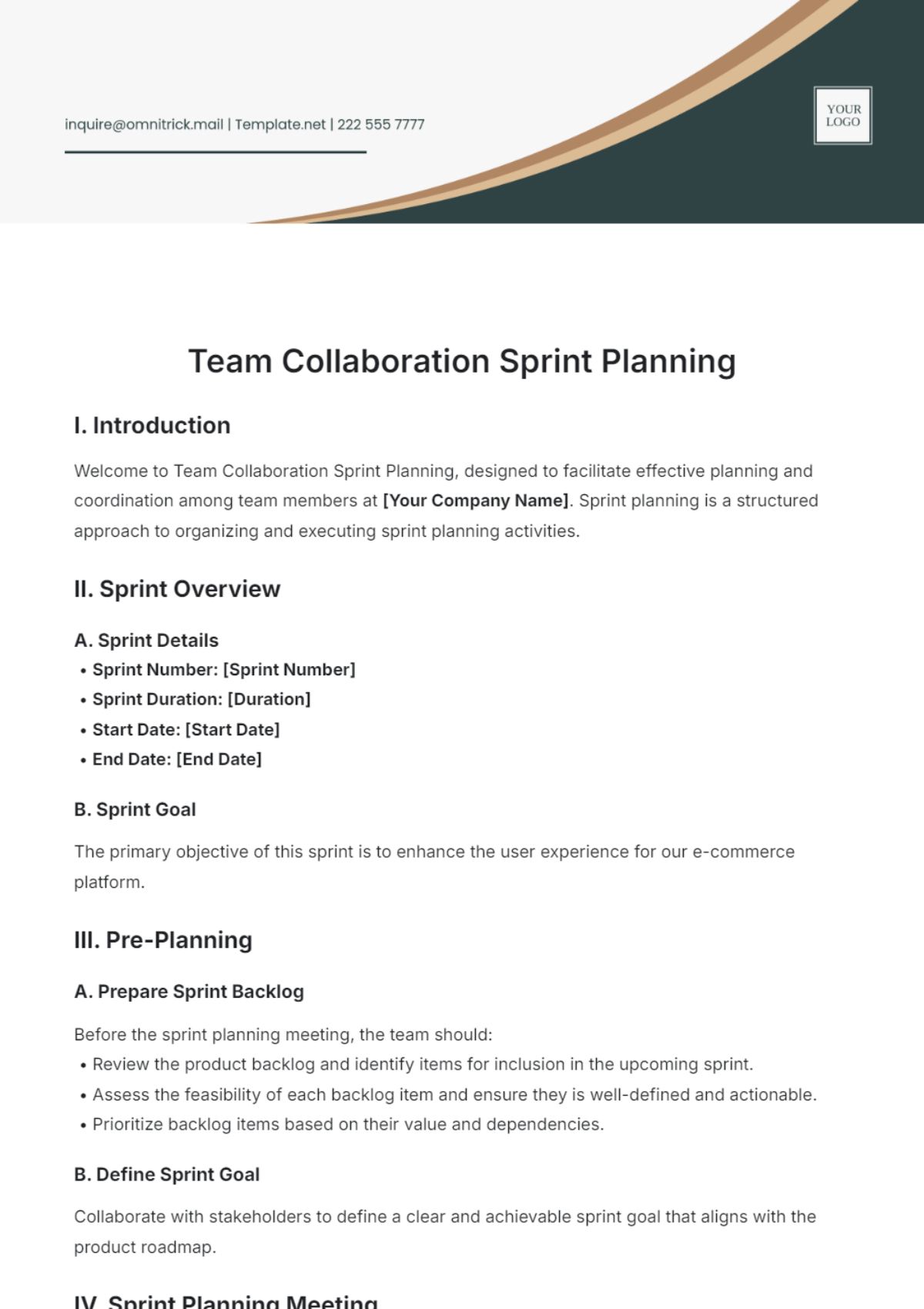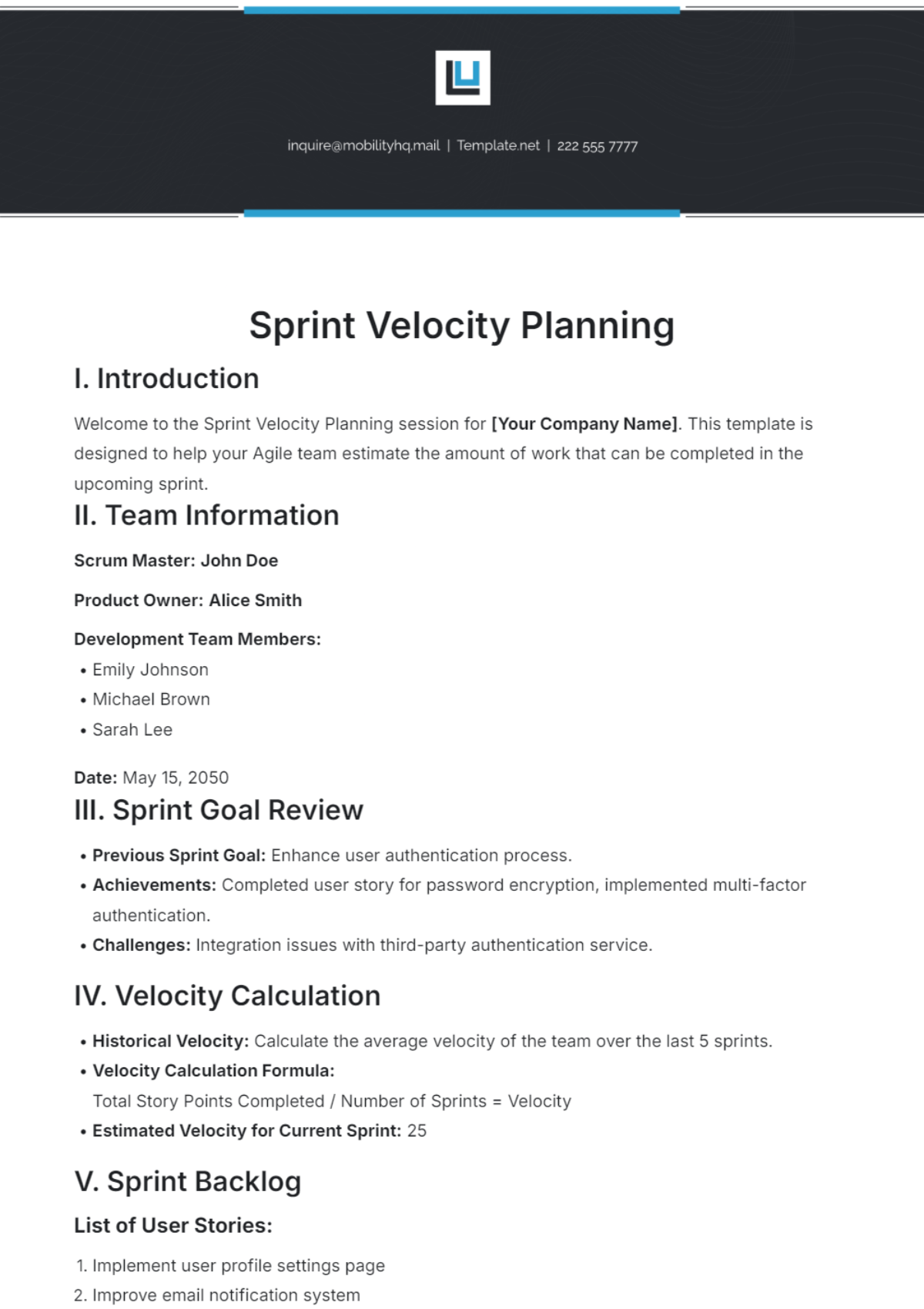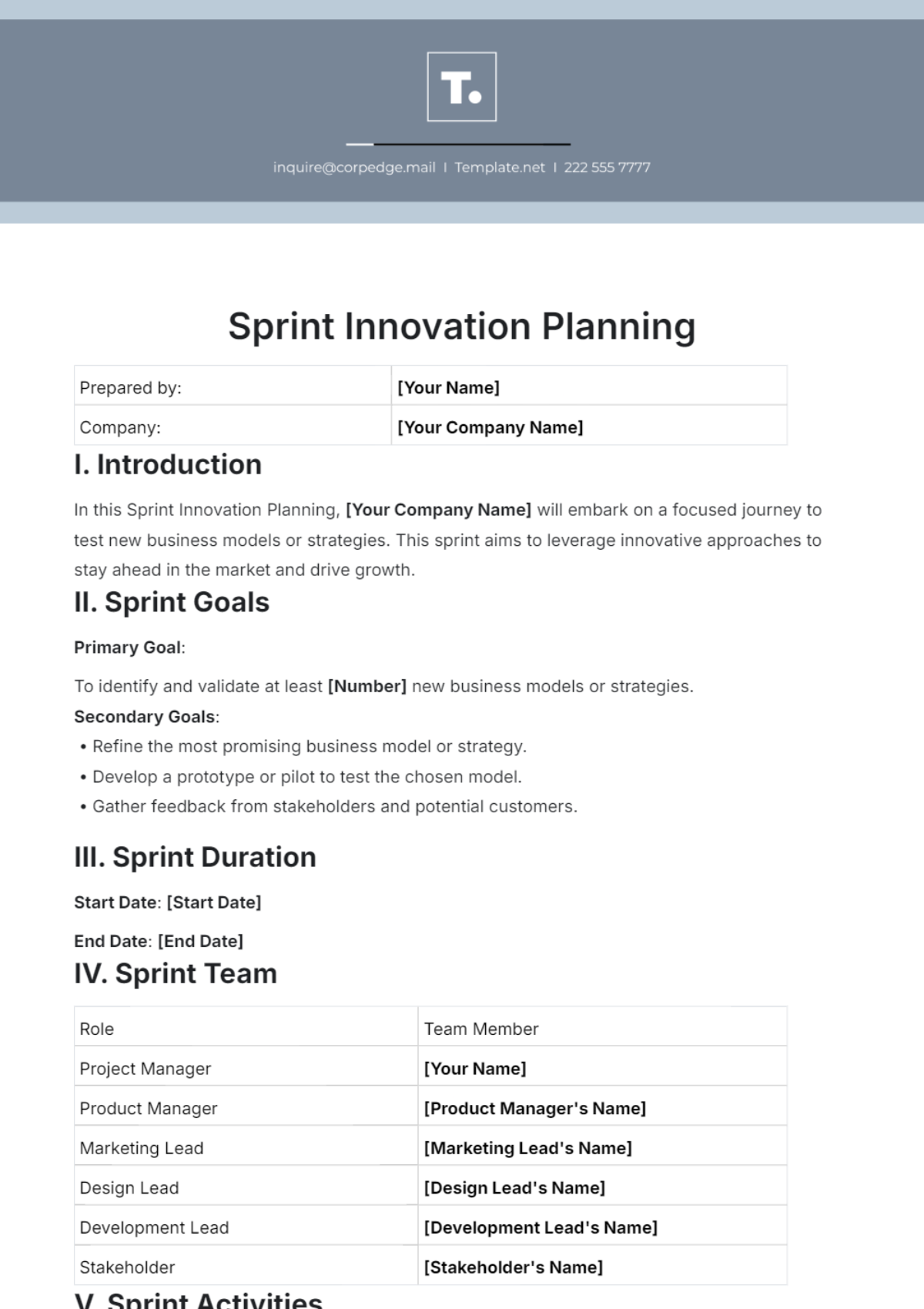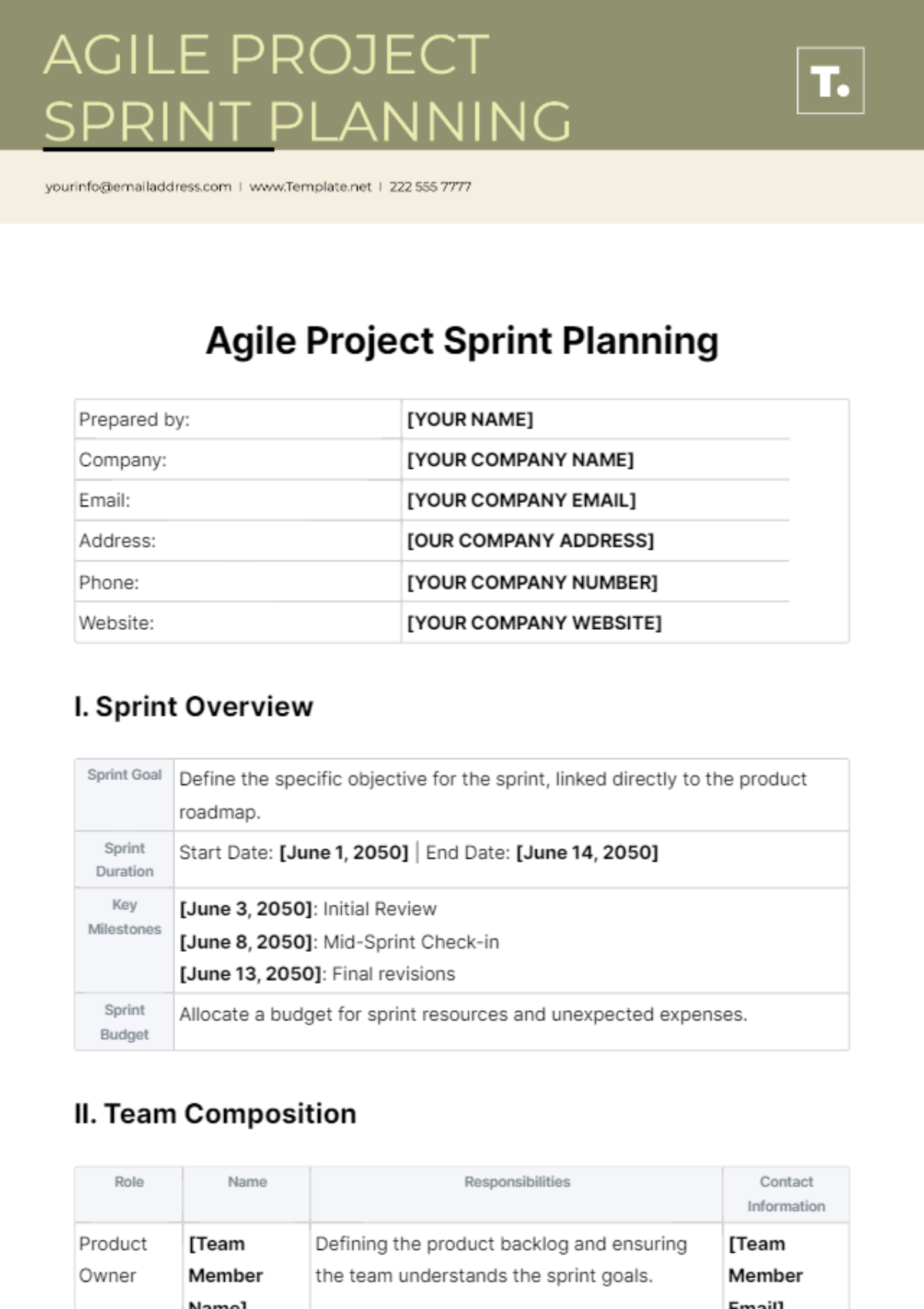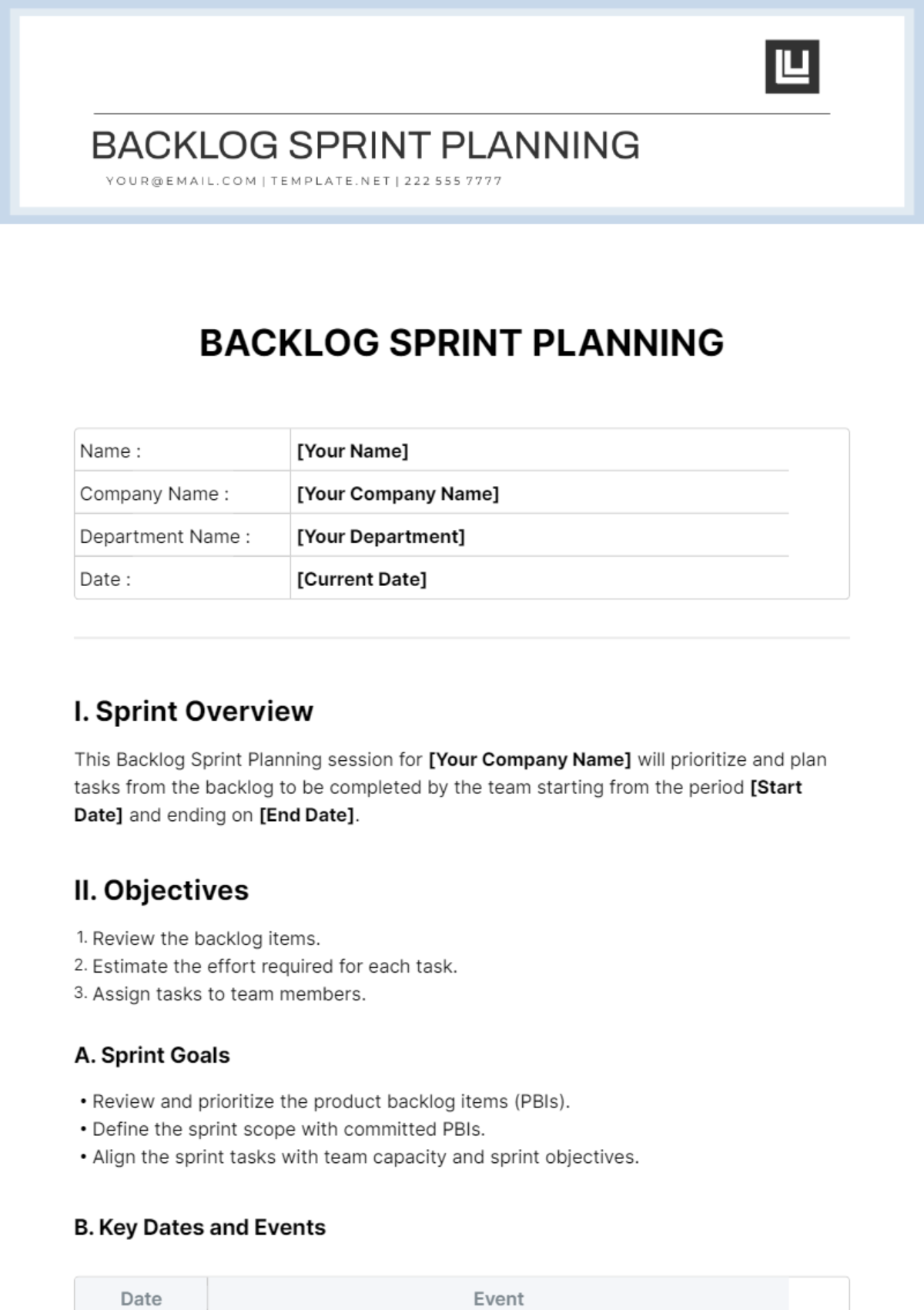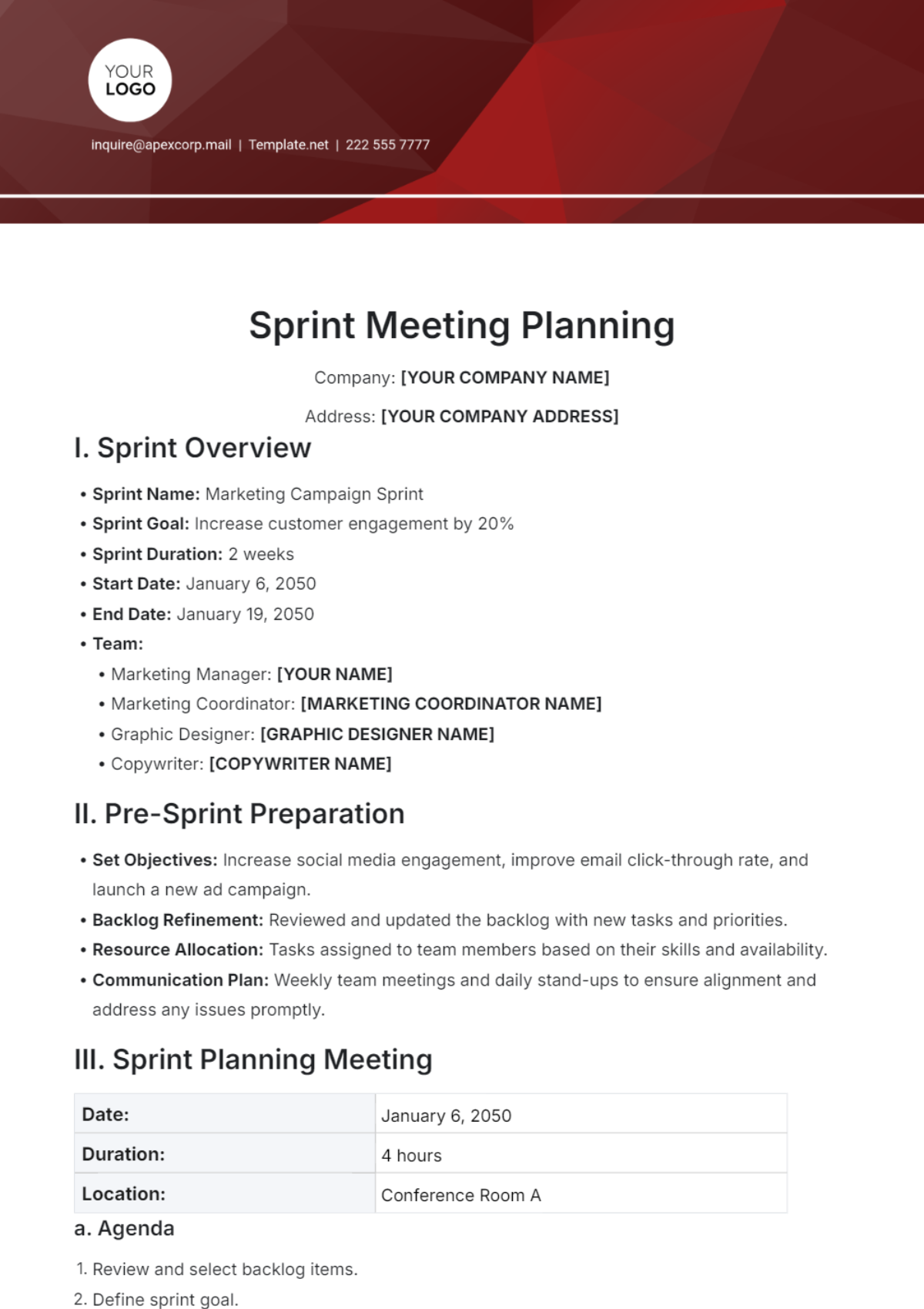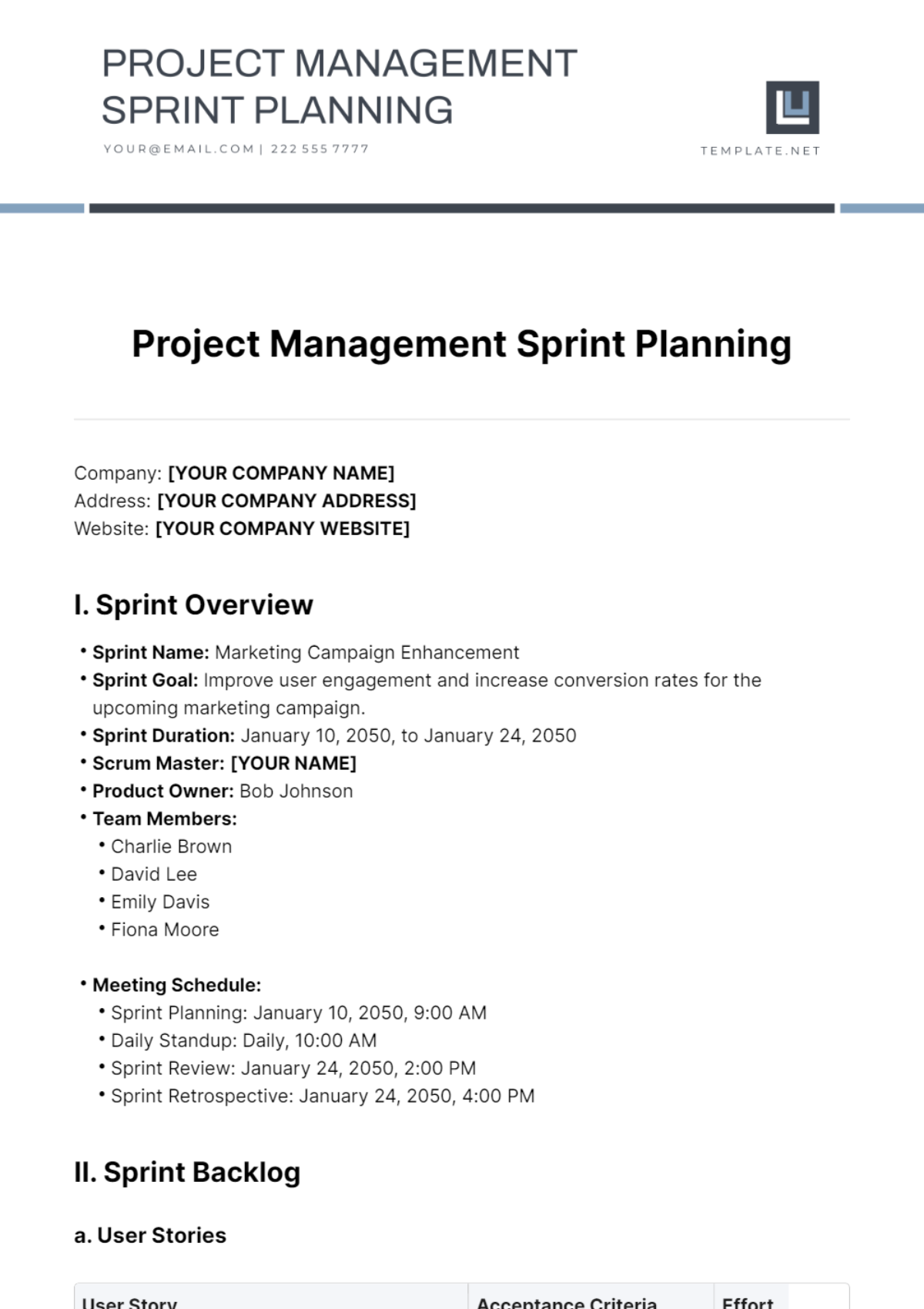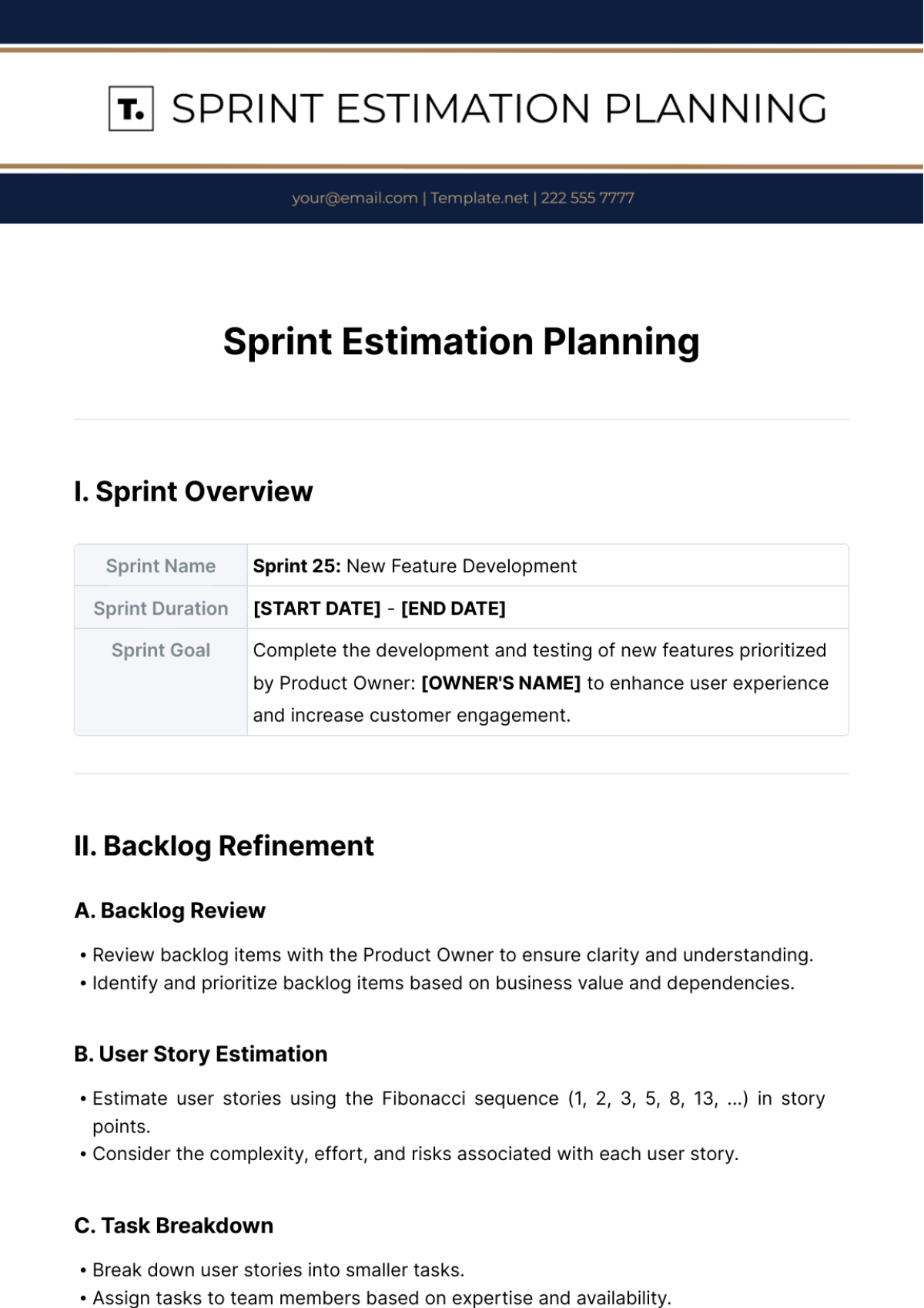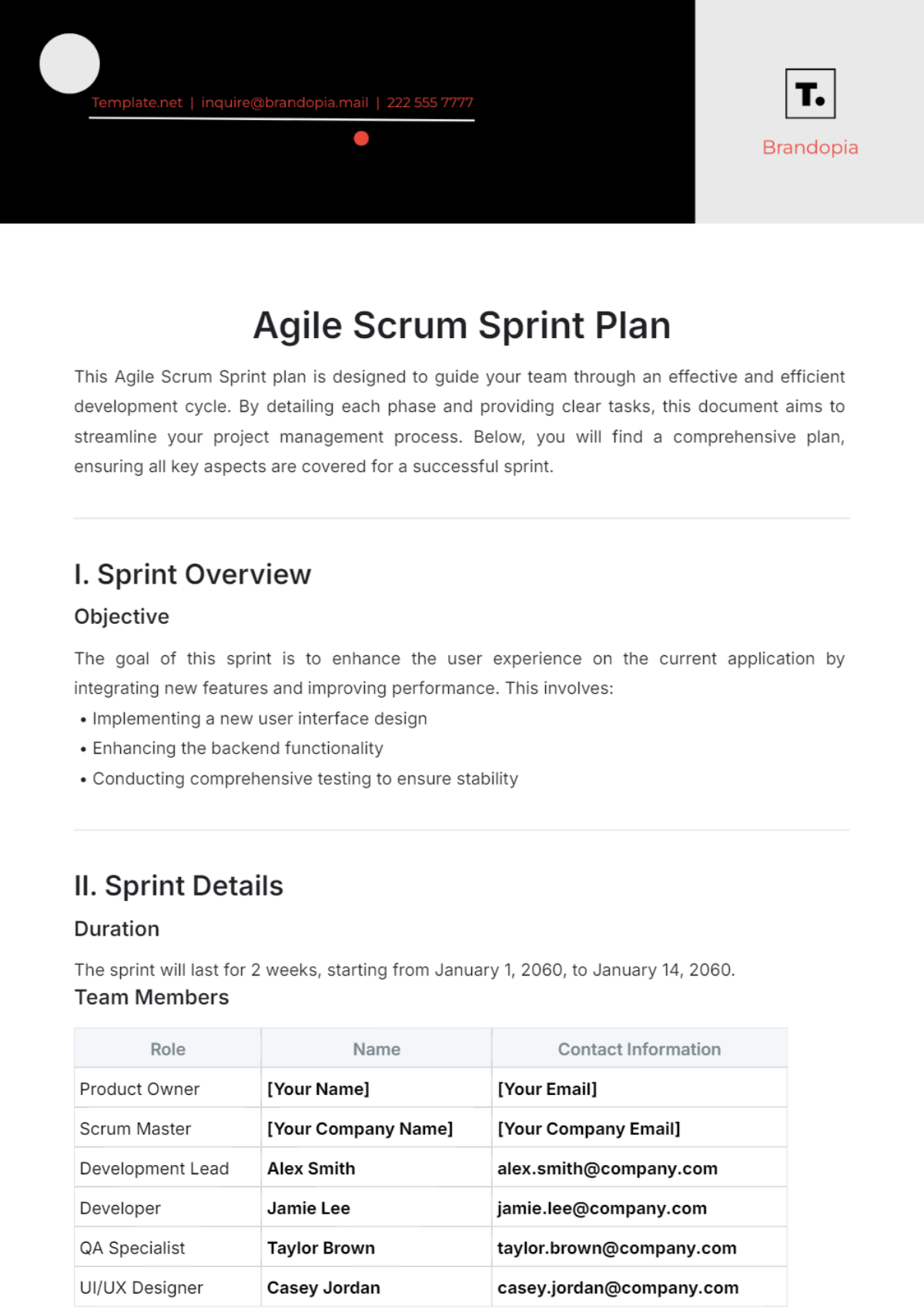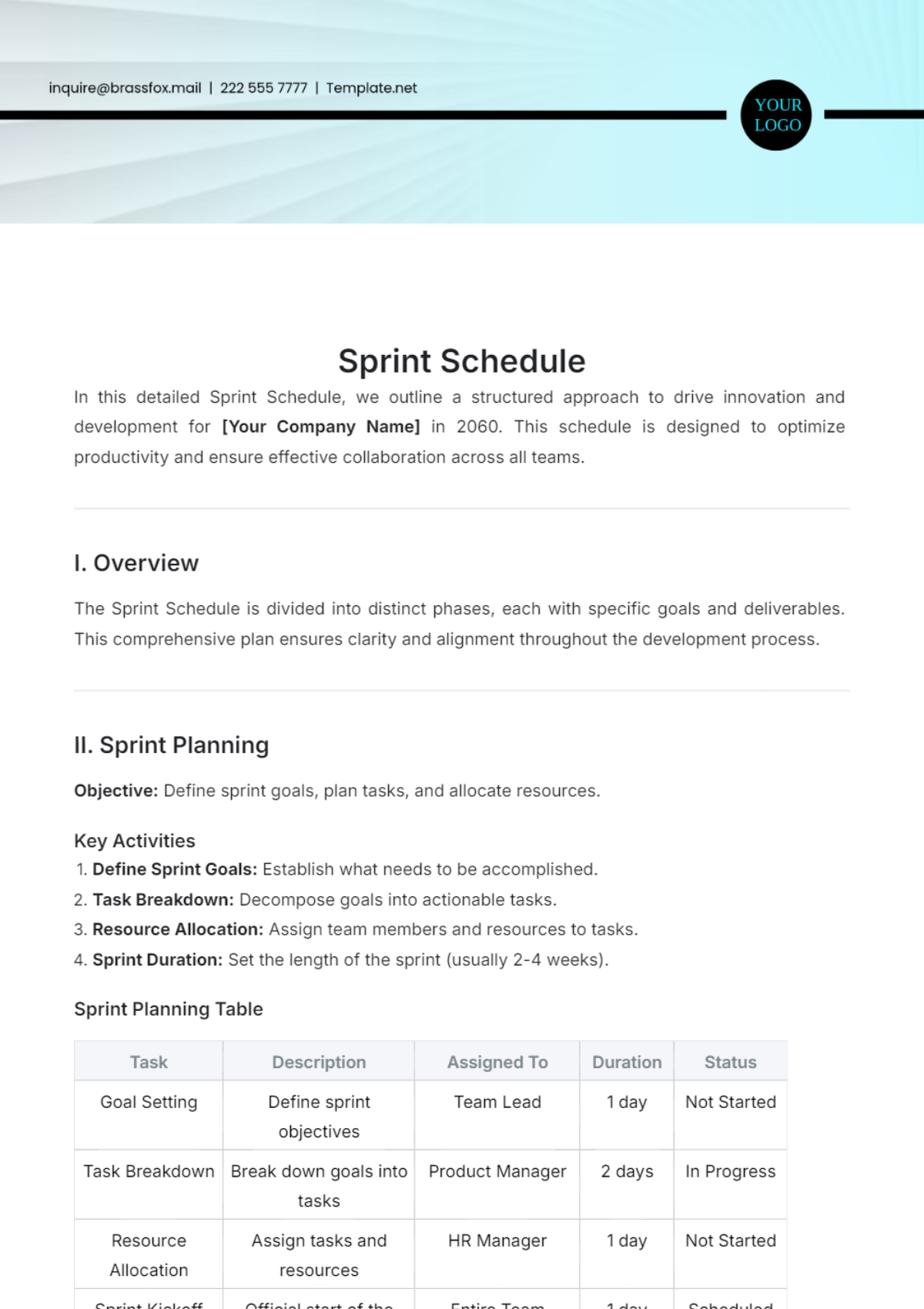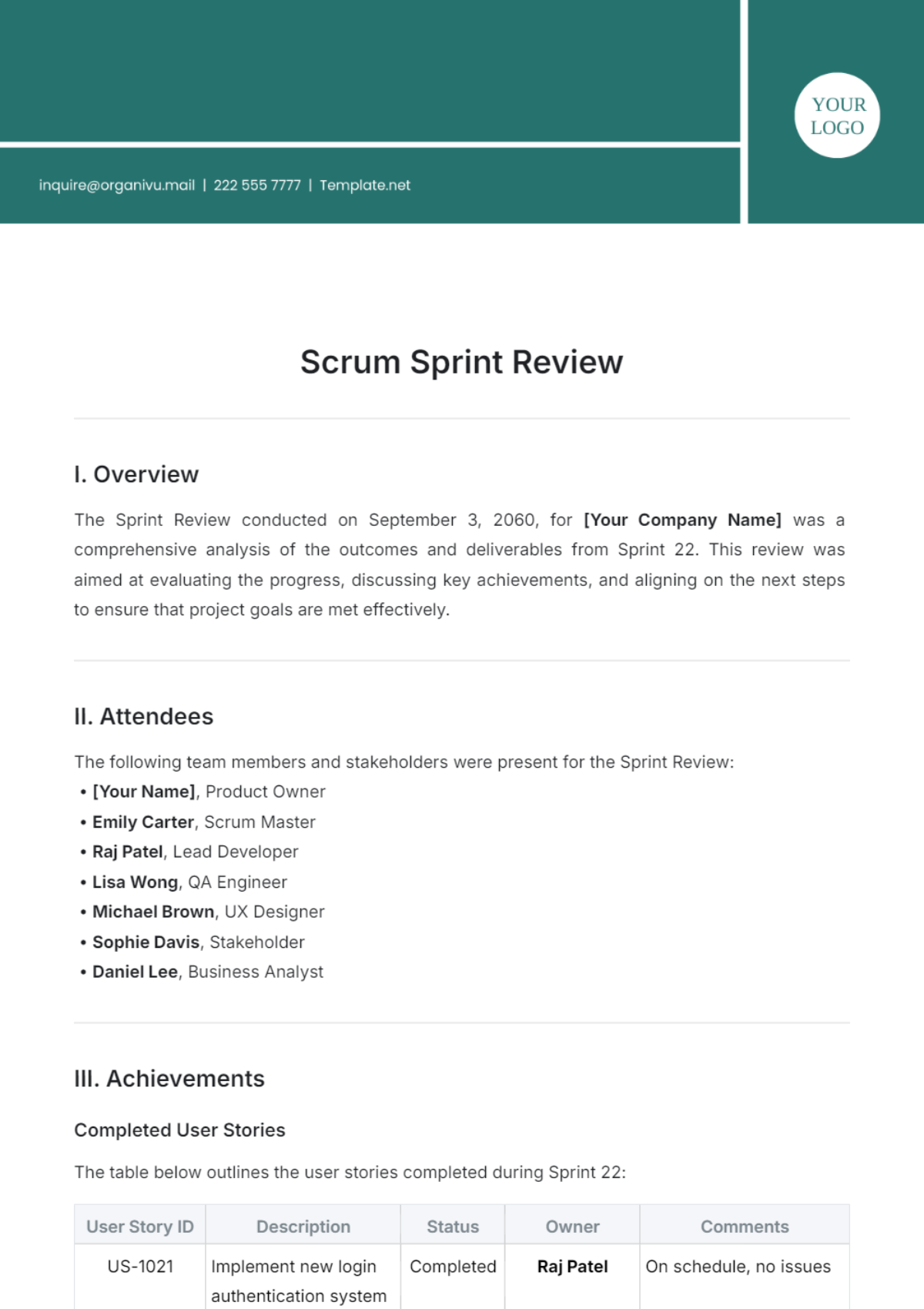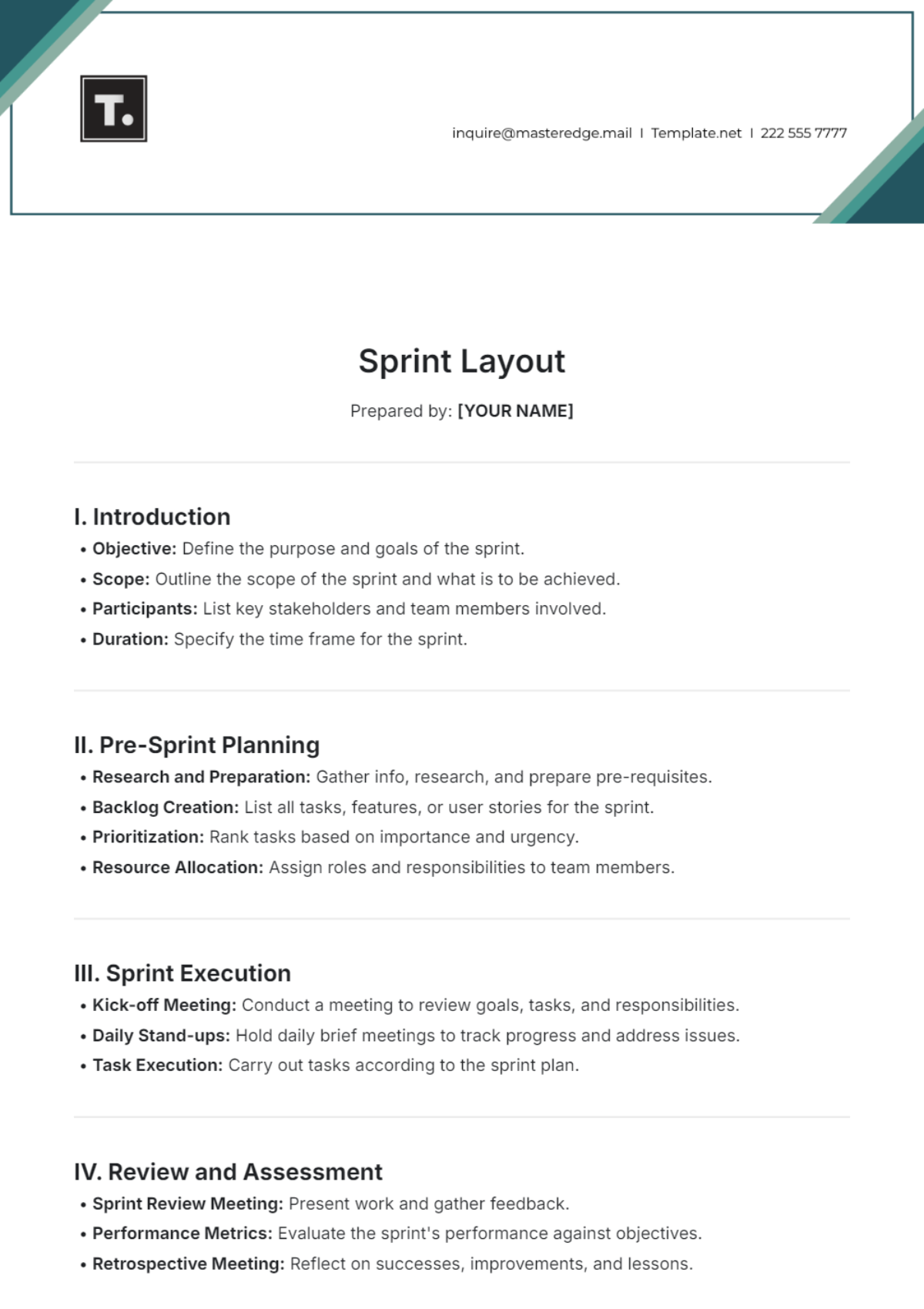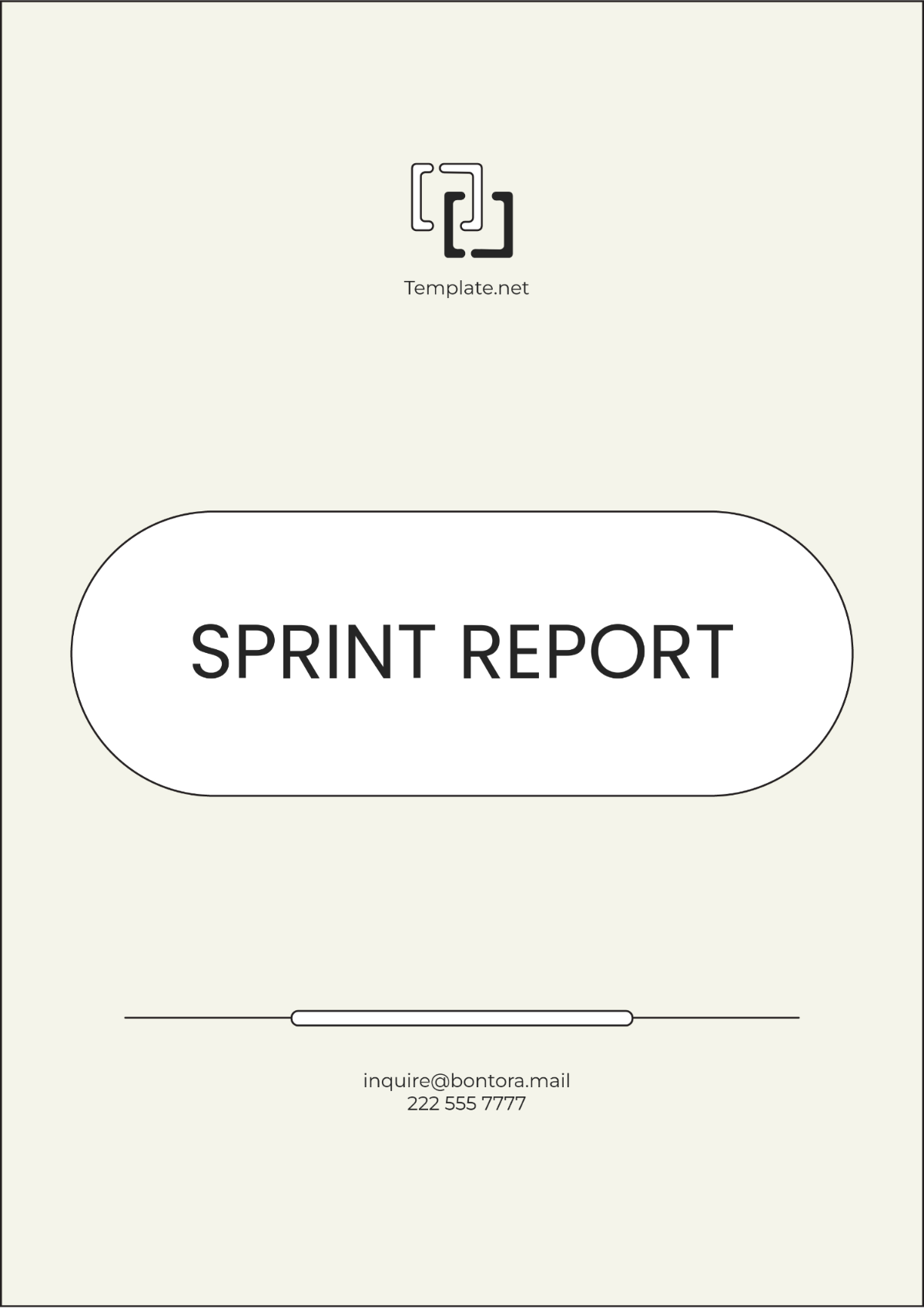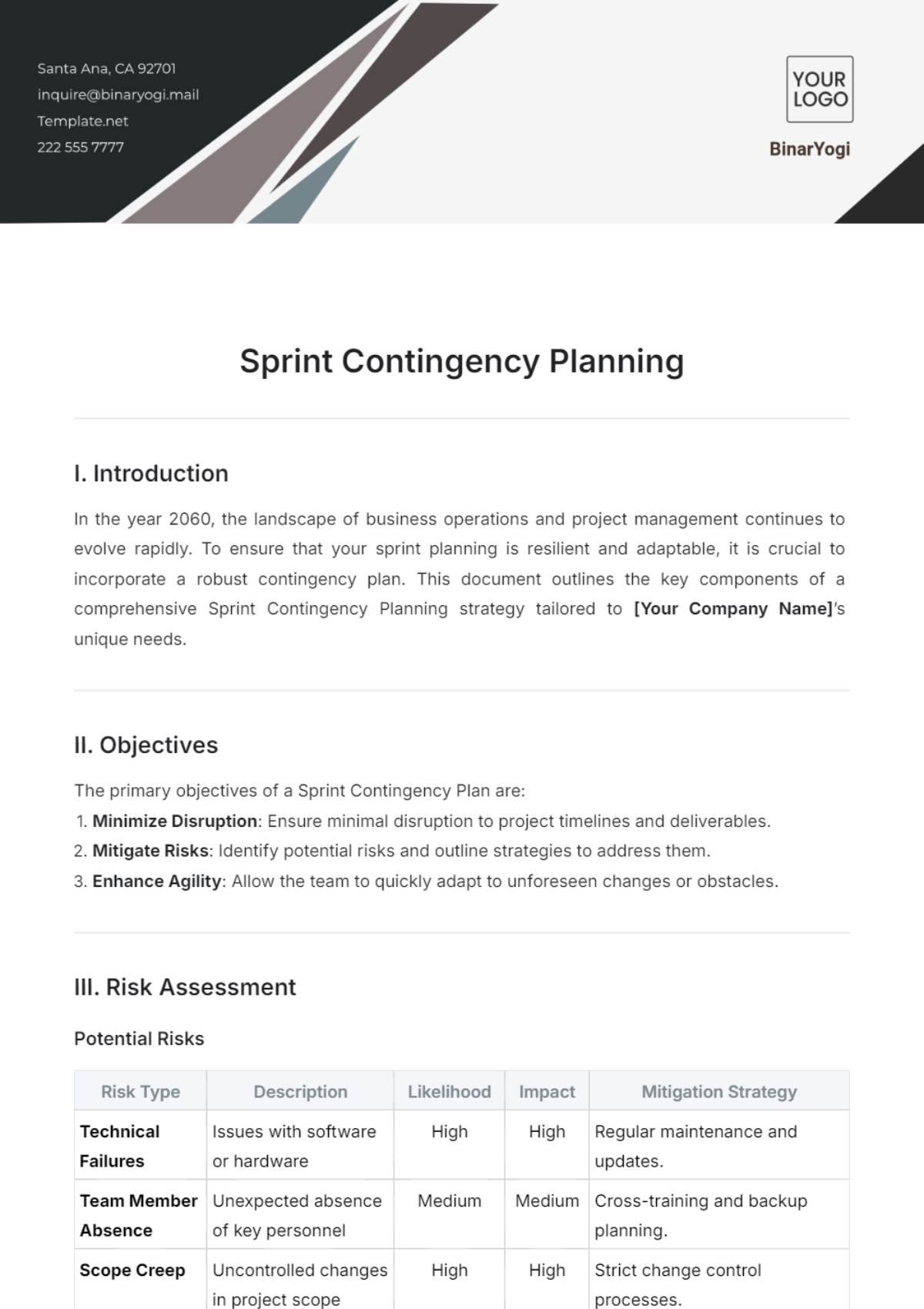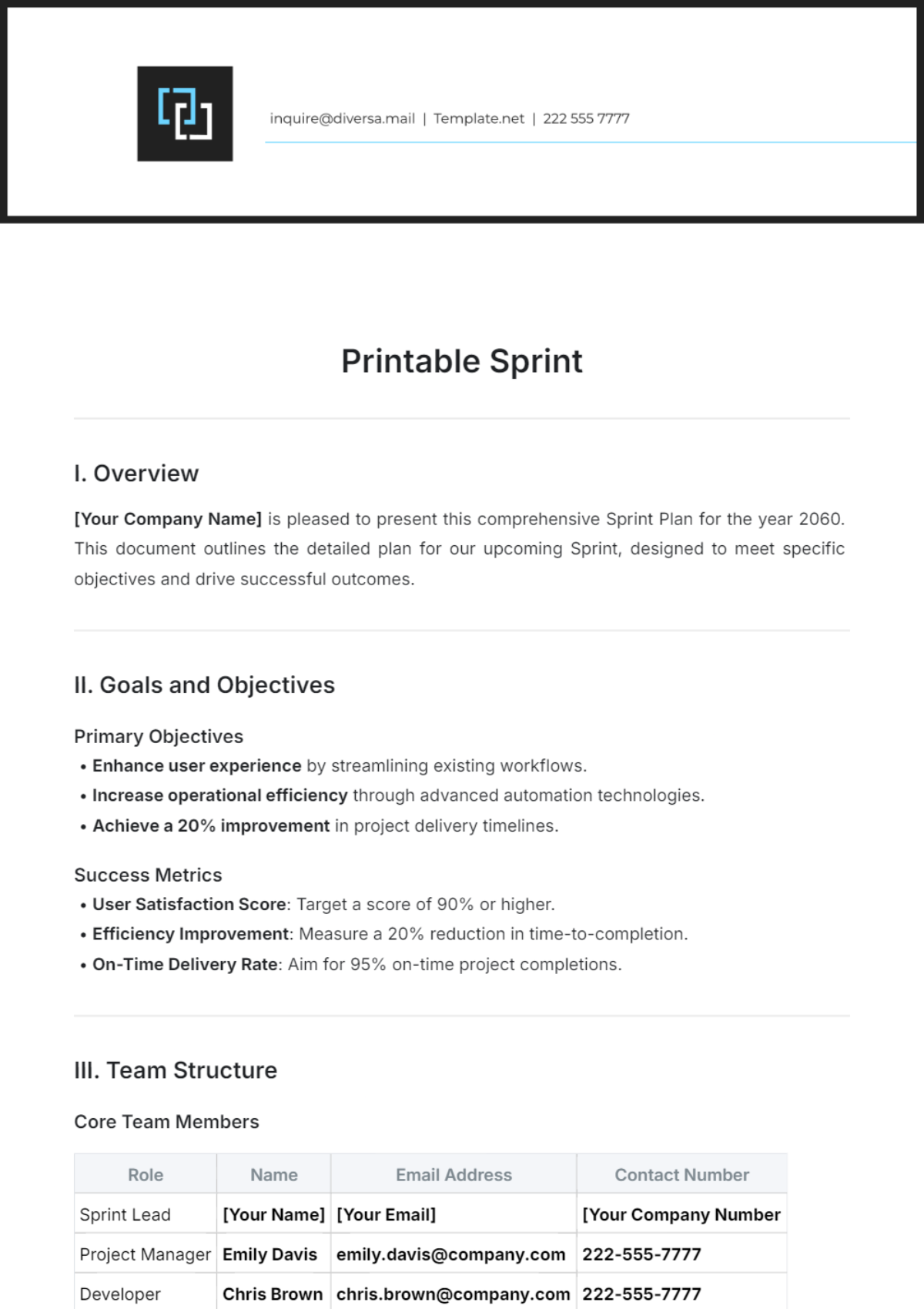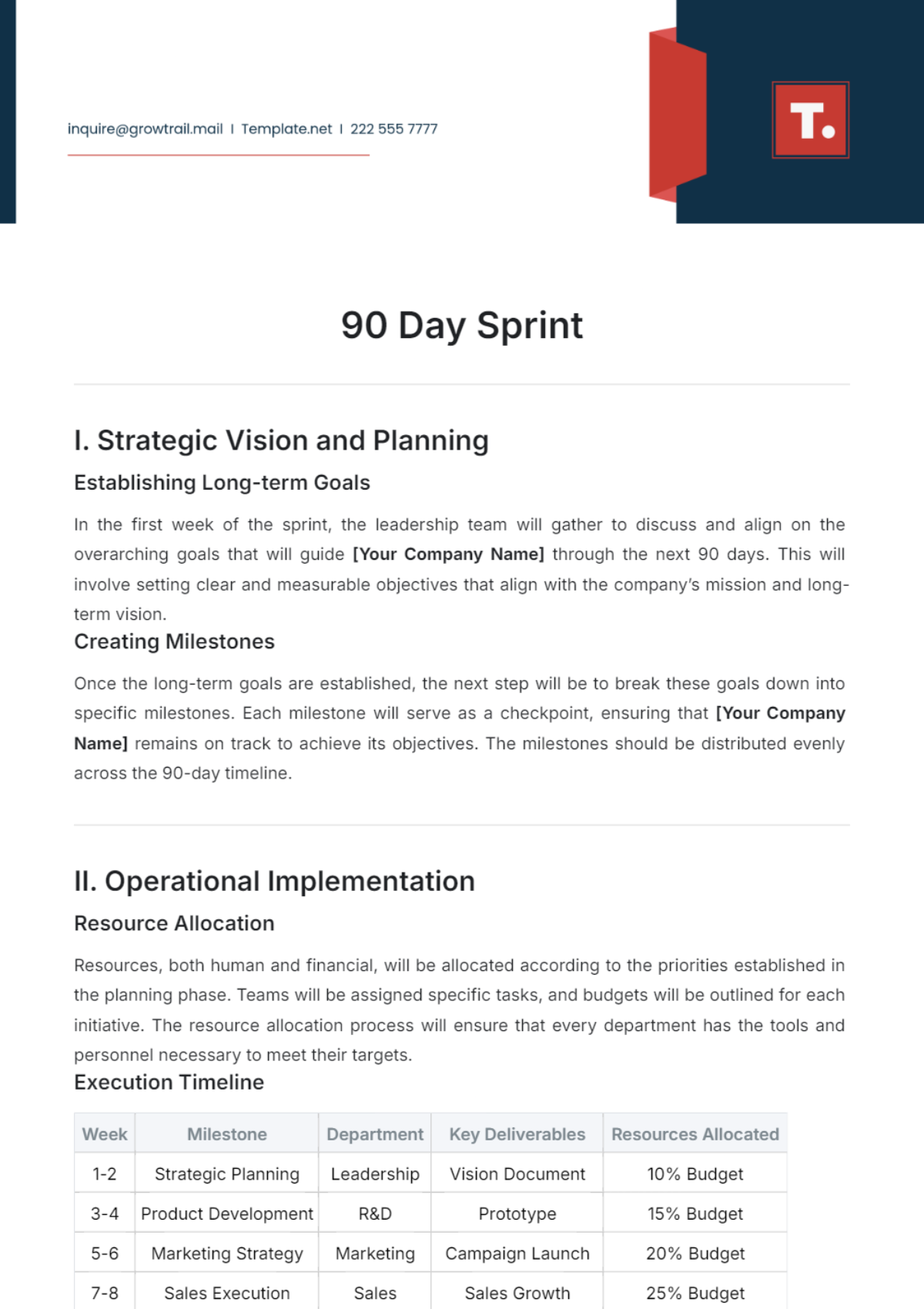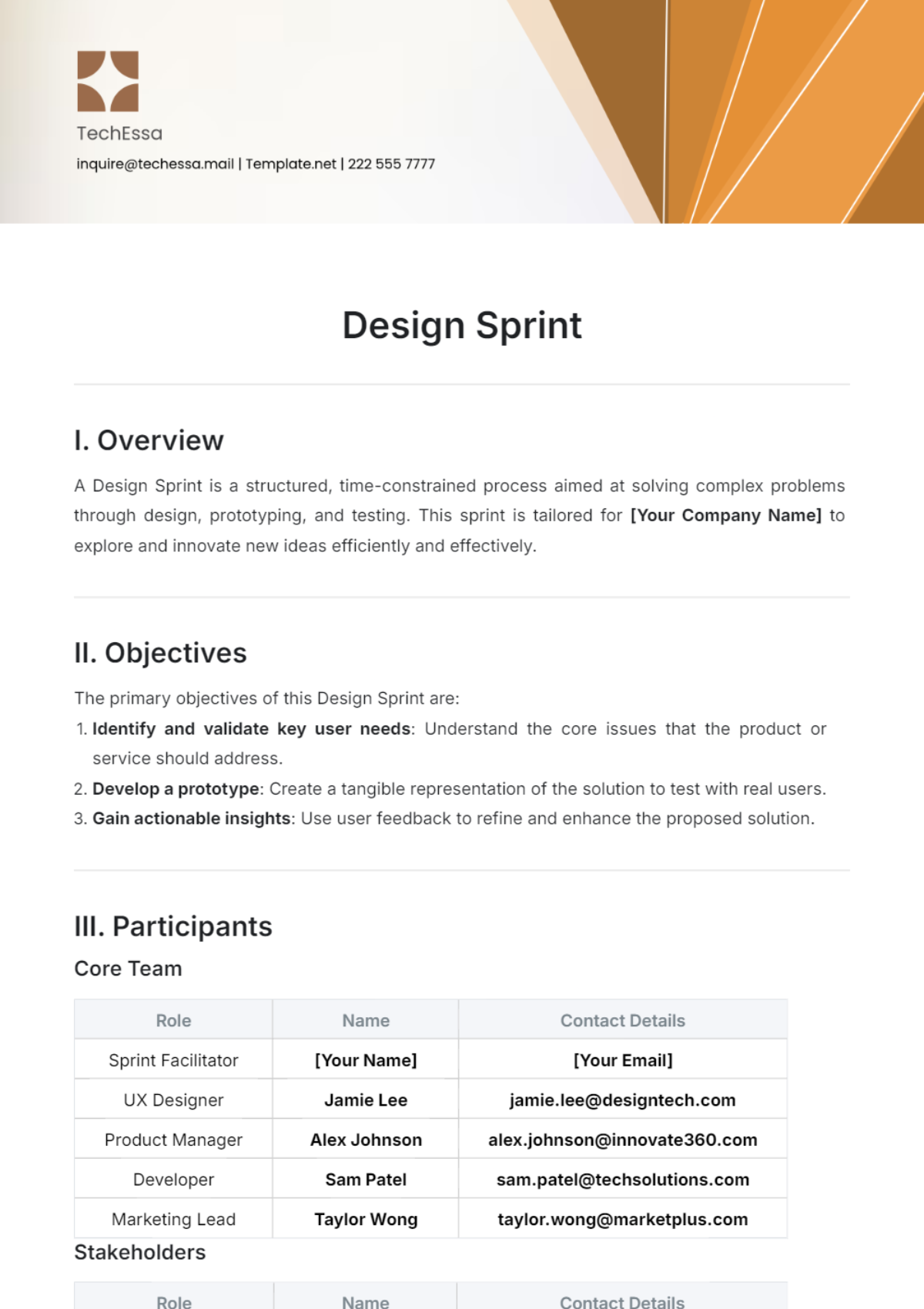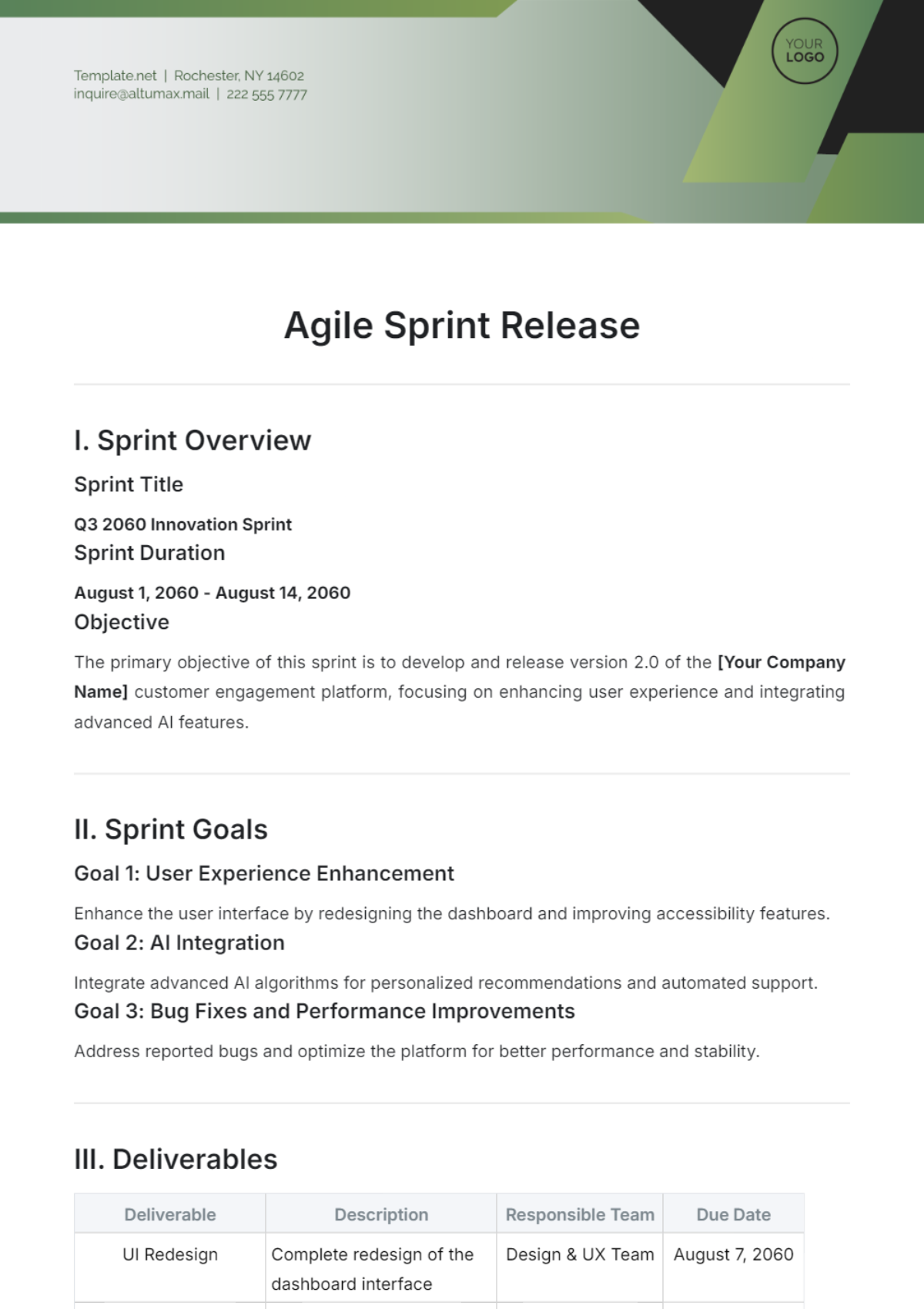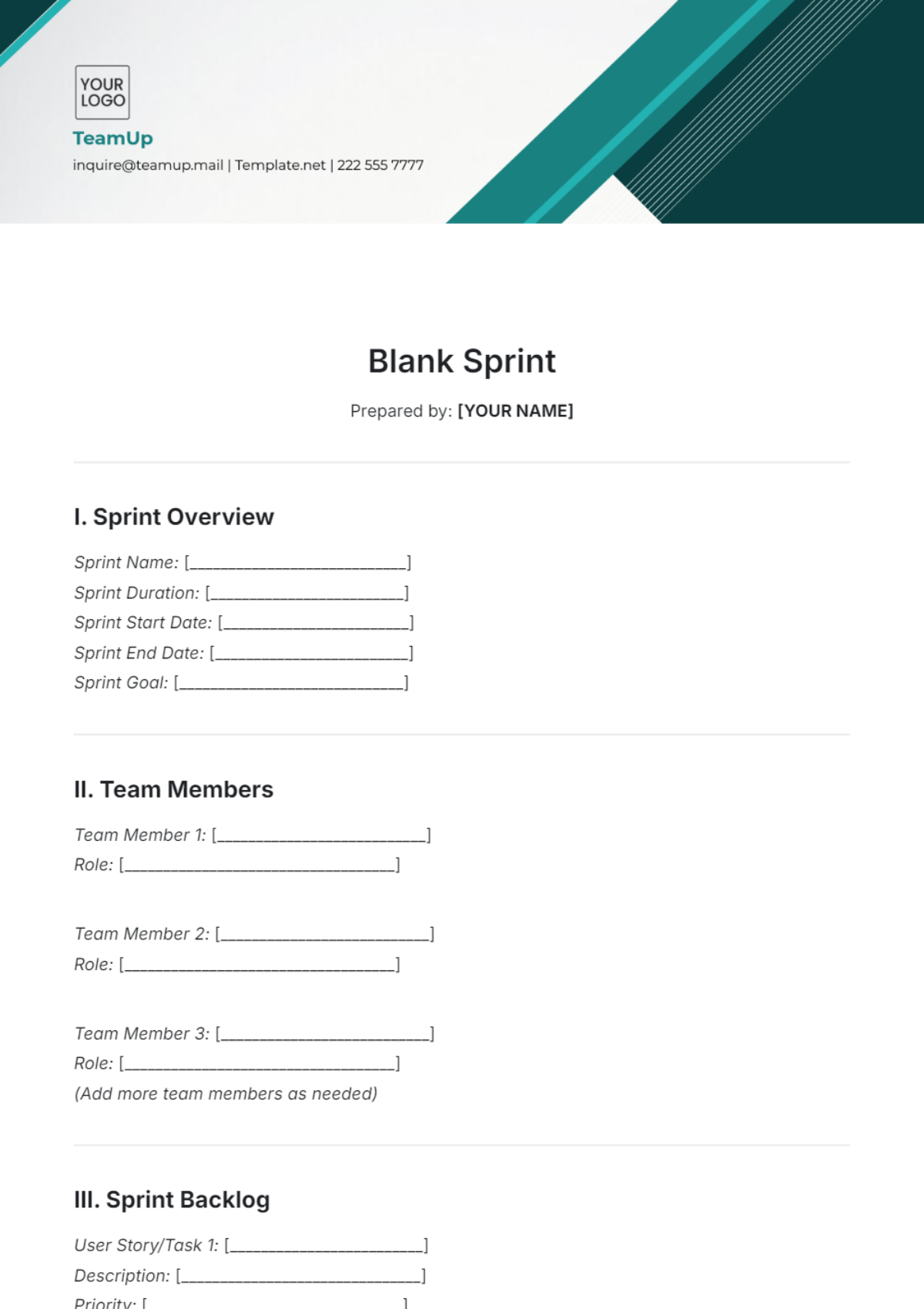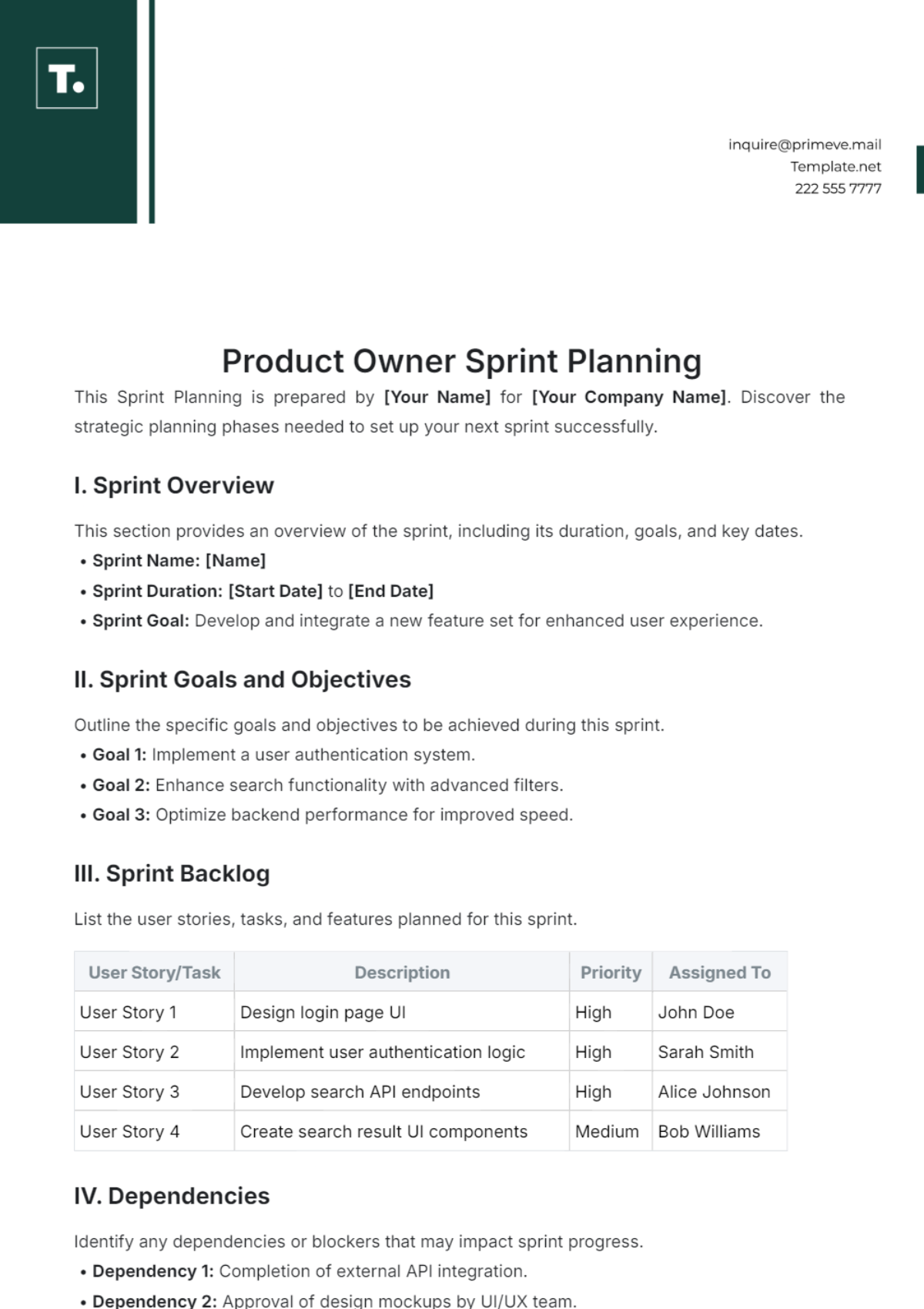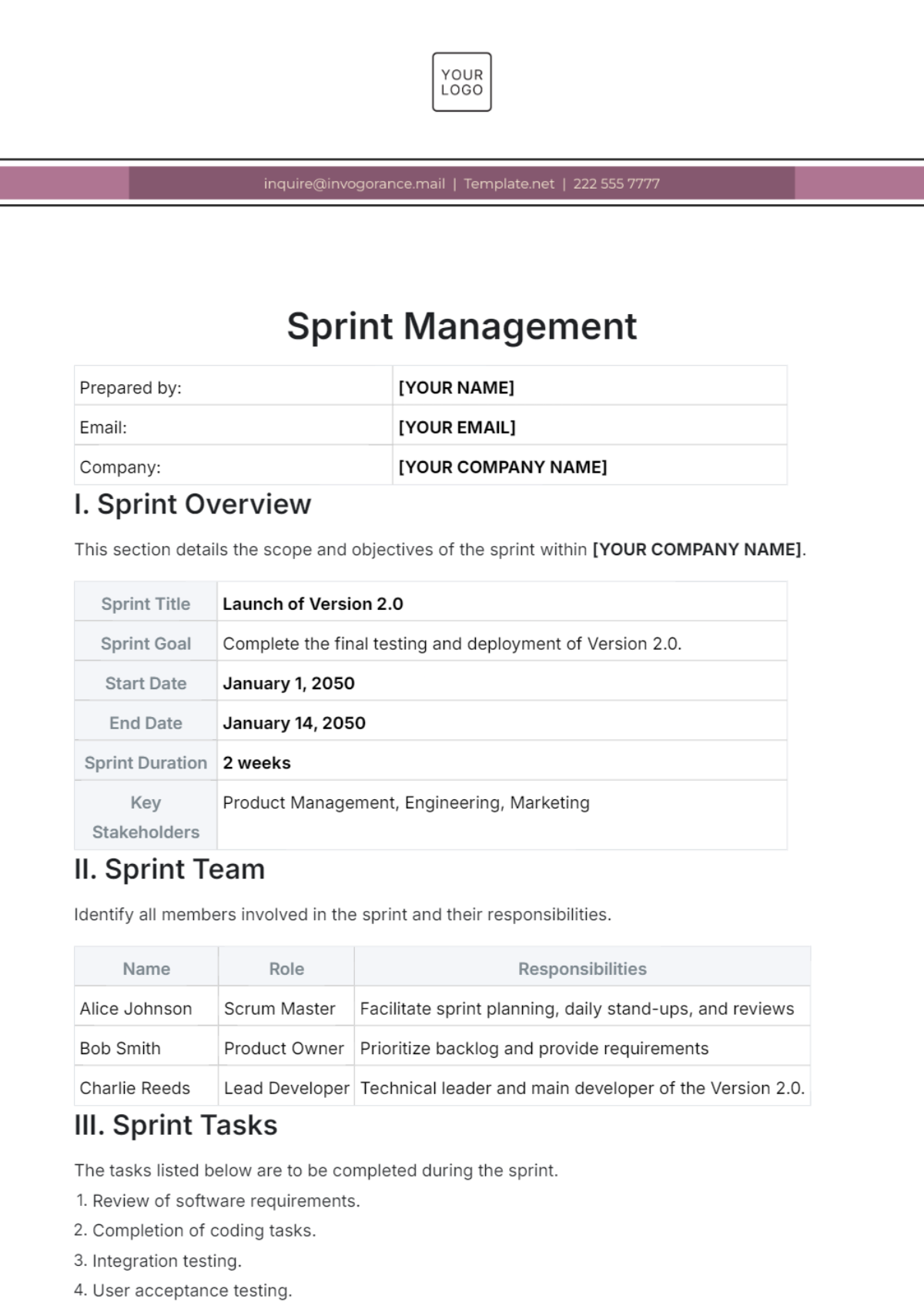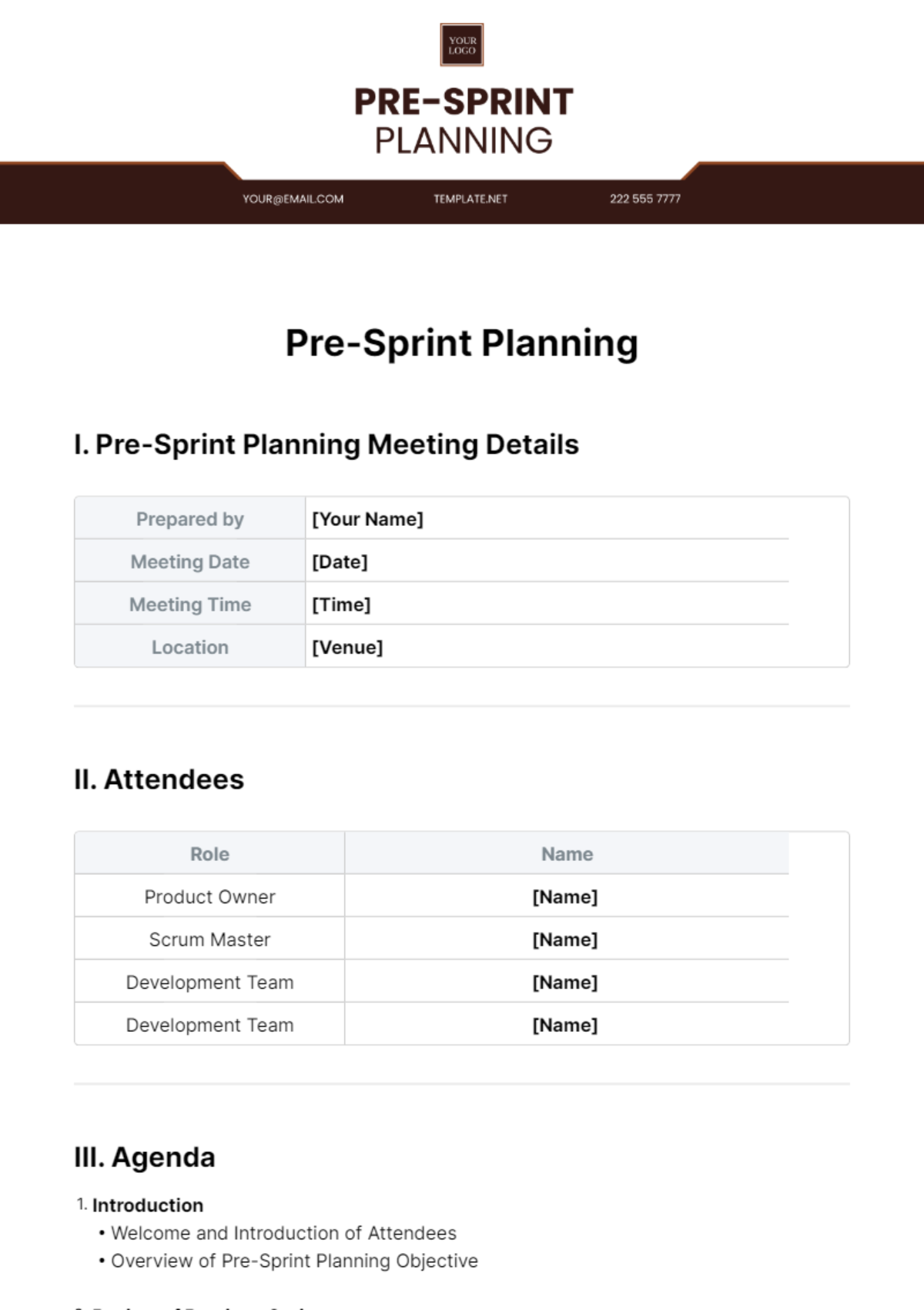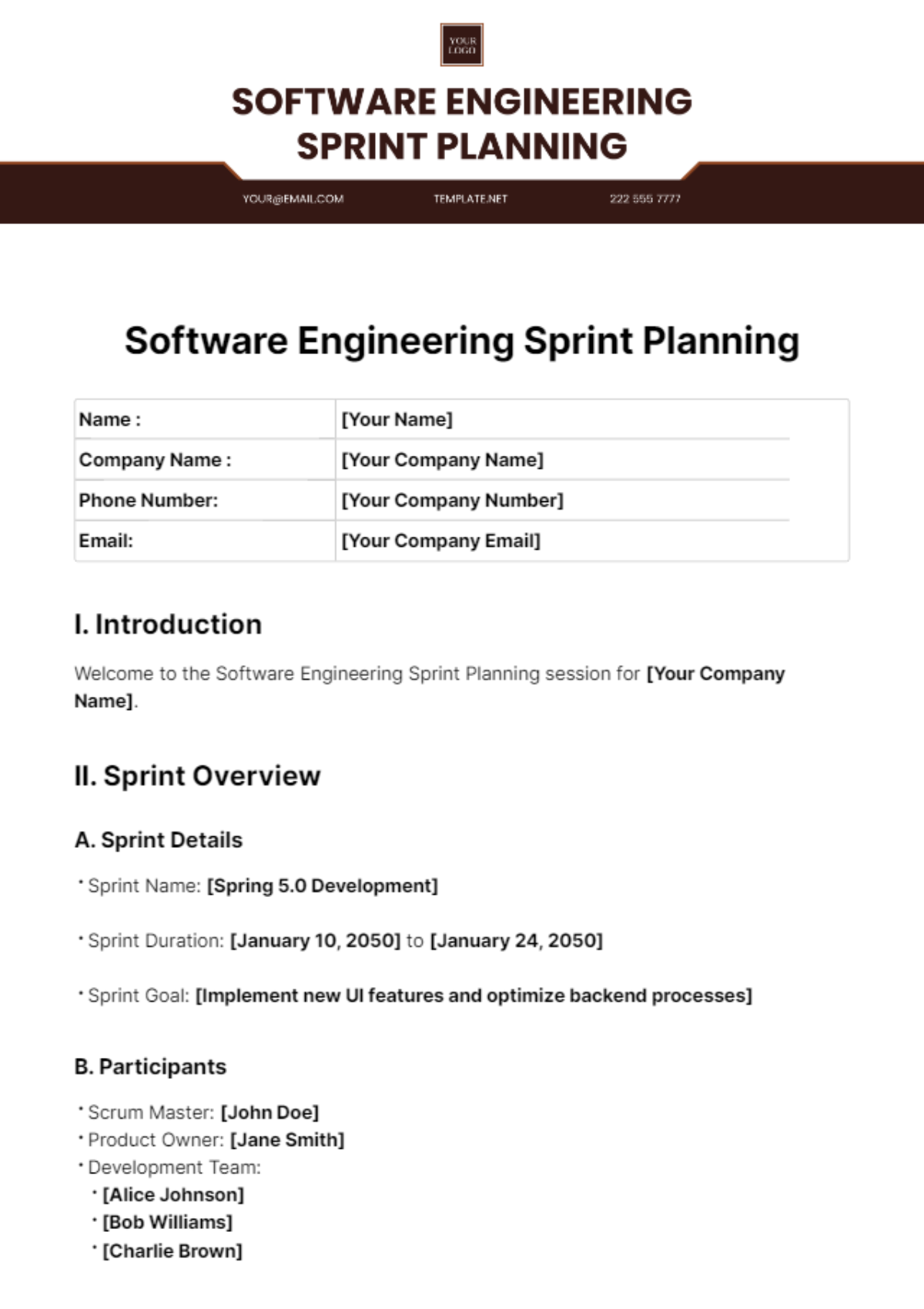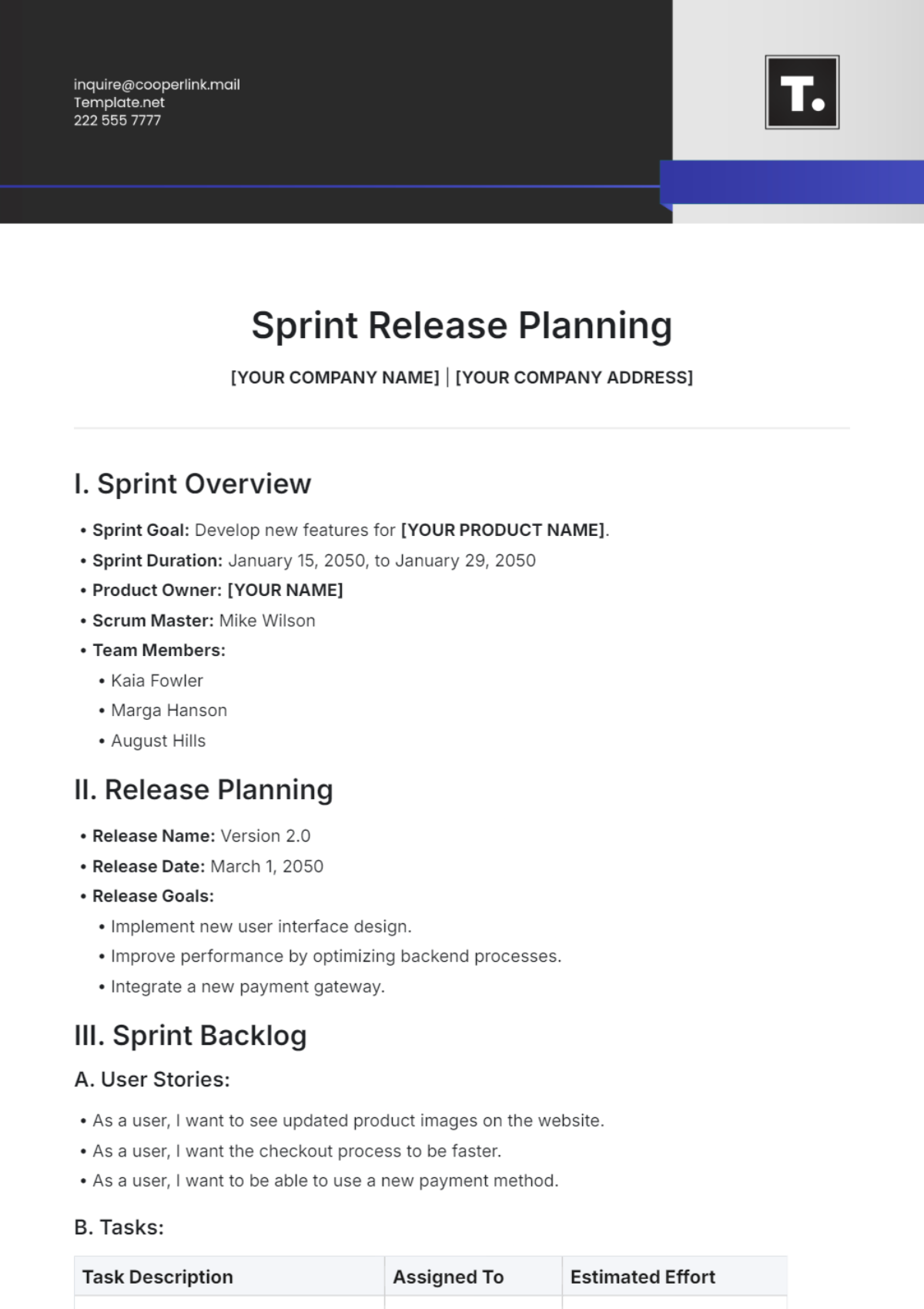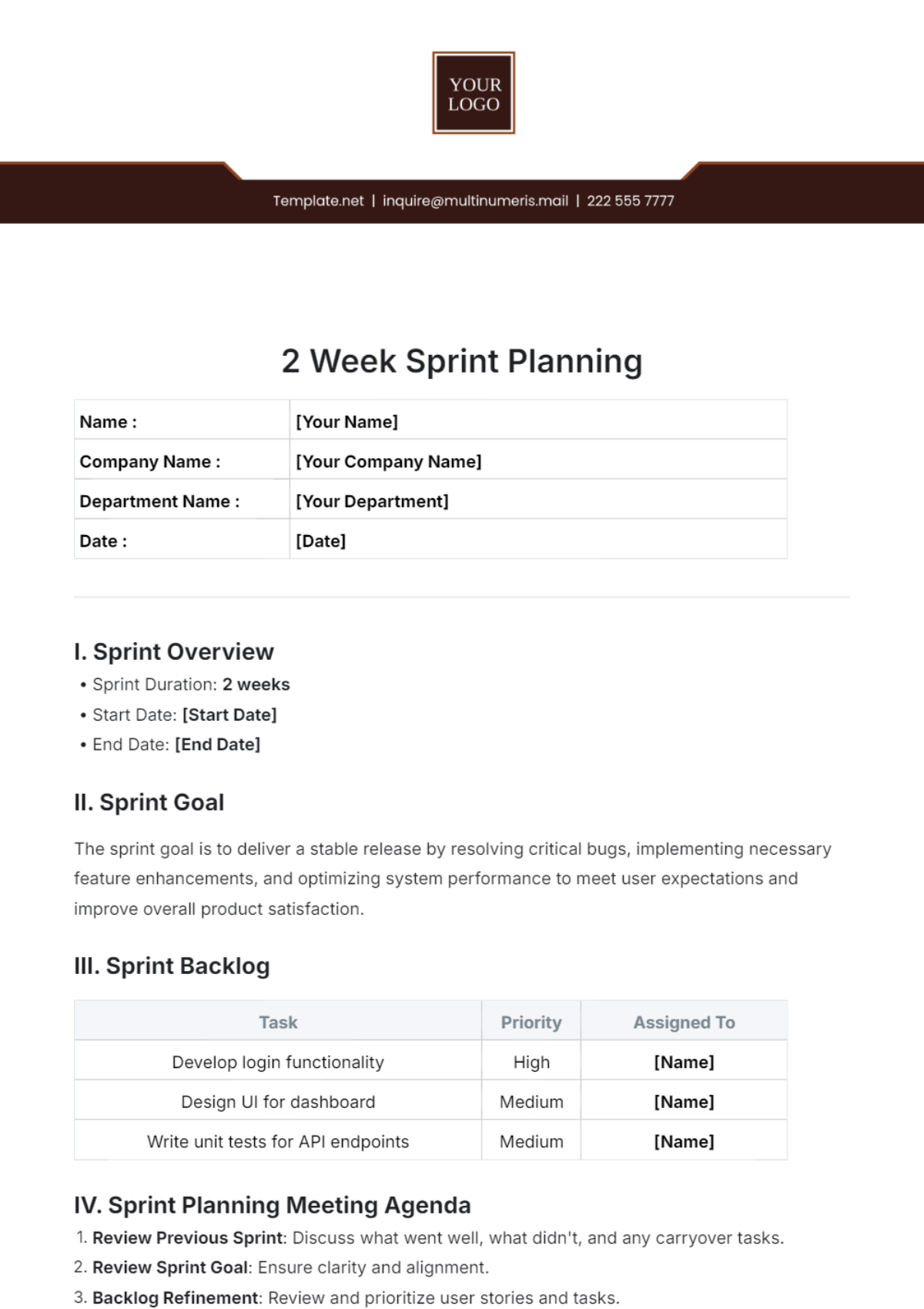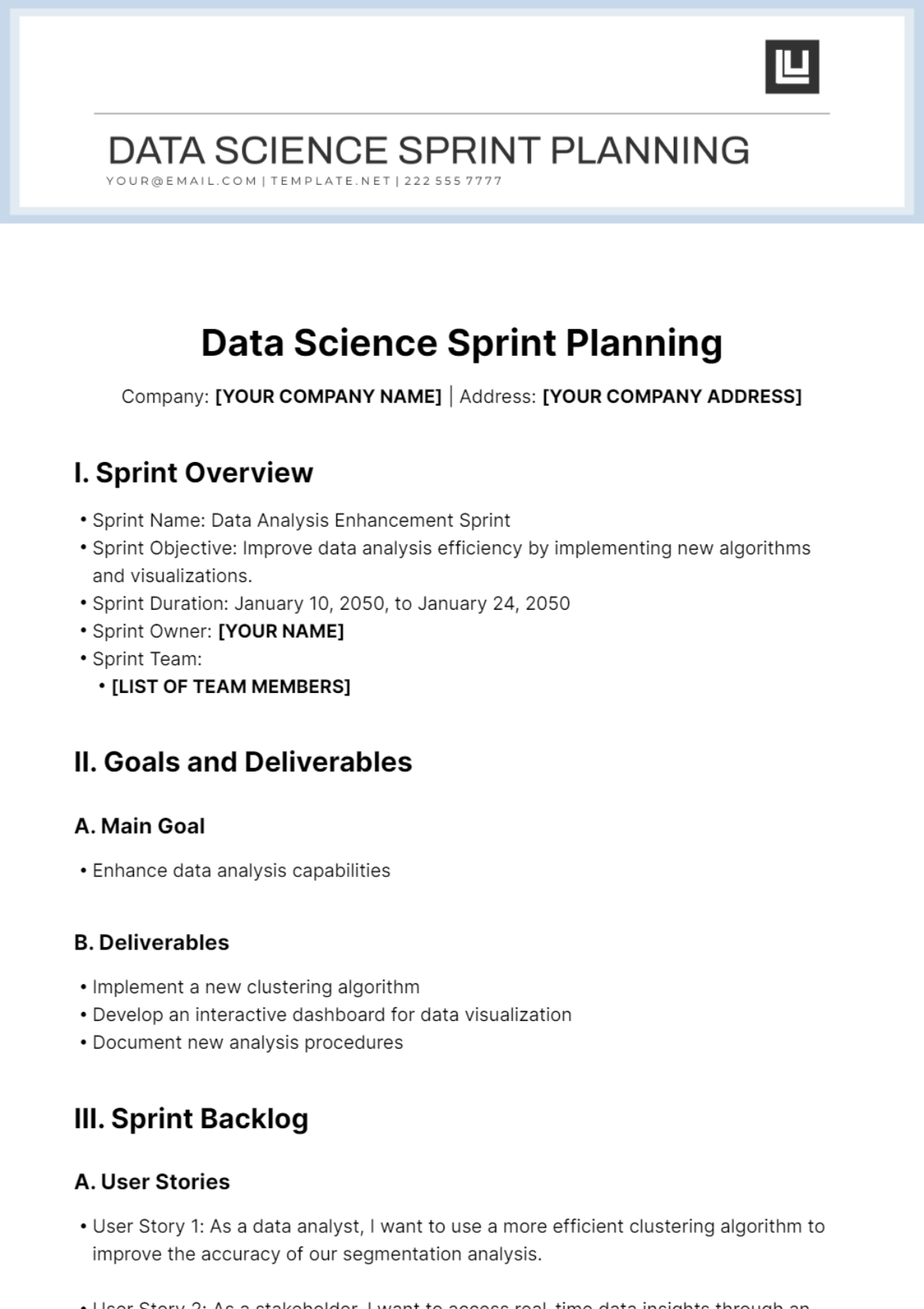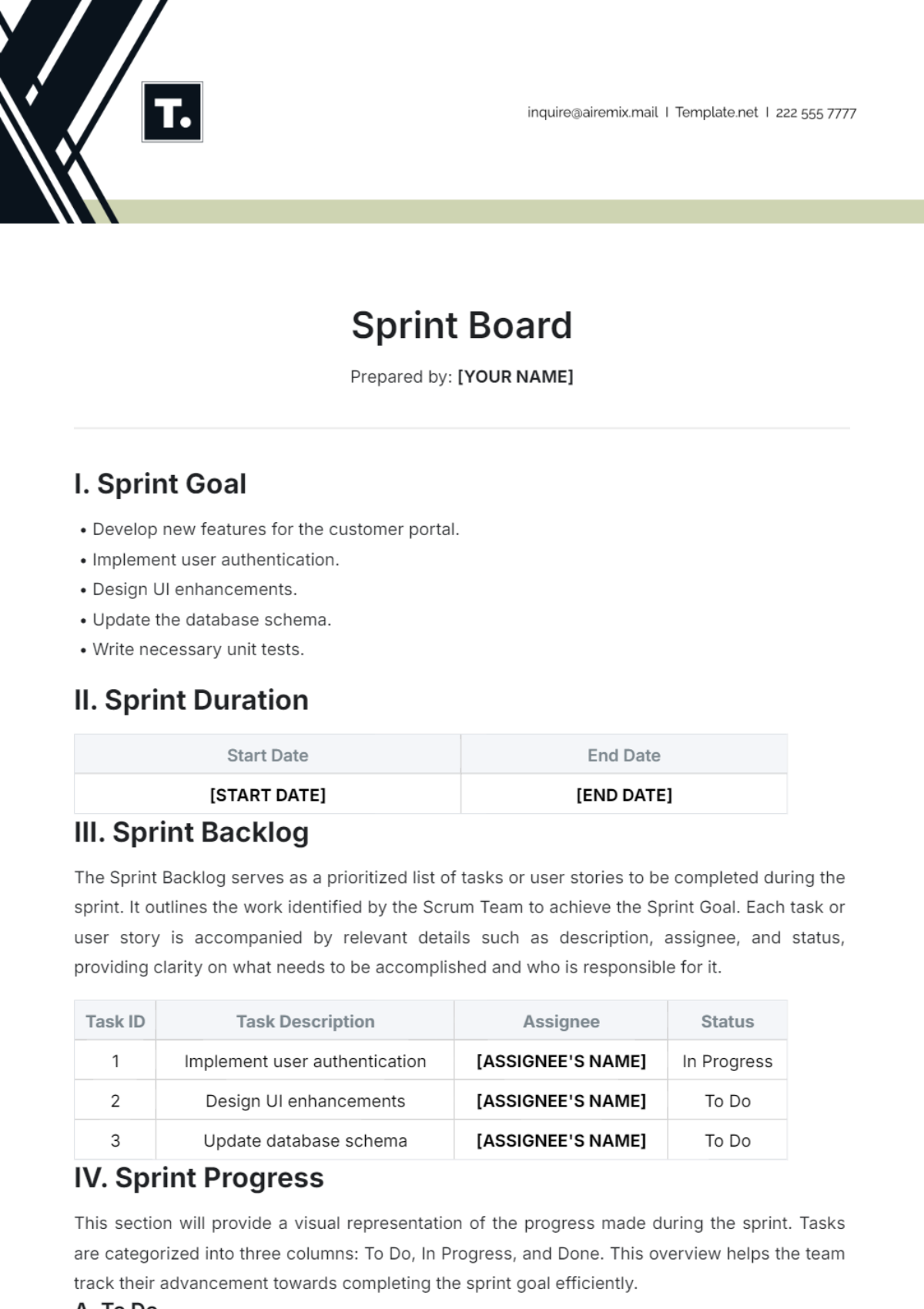Confluence Sprint Planning
I. Sprint Overview
A. Sprint Goal
Develop a new feature for [YOUR COMPANY NAME]'s mobile app that enhances user engagement.
B. Duration
Start Date: January 3, 2050
End Date: January 17, 2050
C. Participants
Product Owner: [YOUR NAME]
Scrum Master: Sam Nuens
Development Team:
Jaxon Floyd
Elias Watson
Edgar Miller
Aurora Jackson
II. Backlog Refinement
A. Review Product Backlog
Review [YOUR COMPANY NAME]'s Product Backlog to identify top-priority items.
Ensure Product Backlog is prioritized based on business value.
B. User Story Refinement
Break down selected Product Backlog items into detailed User Stories.
Assign User Stories to appropriate team members.
Estimate User Stories using Planning Poker.
III. Sprint Planning Meeting
A. Preparation
Reserve a meeting room or virtual meeting space.
Send meeting agenda to all participants.
Ensure Confluence and JIRA are accessible.
B. Agenda Items
Item | Description |
|---|---|
Review Sprint Goal | Discuss and confirm Sprint goal with the team. |
Review Capacity | Review team capacity and adjust Sprint commitment if necessary. |
Select User Stories | Select User Stories from Product Backlog to be included in Sprint. |
Breakdown Tasks | Break down User Stories into tasks and subtasks. |
Estimation | Estimate effort for each task using Story Points. |
Acceptance Criteria | Define clear acceptance criteria for each User Story. |
Dependencies | Identify and address any dependencies or blockers. |
Define the Definition of Done | Clarify the Definition of Done for Sprint deliverables. |
Create Sprint Backlog | Populate Sprint Backlog with selected User Stories and associated tasks. |
C. Outputs
Completed Sprint Backlog in Confluence.
Defined Sprint Goal.
Estimated effort for each task.
Clear acceptance criteria for each User Story.
Identified dependencies and blockers.
IV. Sprint Execution
A. Daily Stand-ups
Conduct daily stand-up meetings to monitor progress.
Each team member answers three questions:
What did I accomplish yesterday?
What will I do today?
Are there any blockers?
B. Task Progress Tracking
Update task progress regularly in JIRA.
Monitor the burndown chart to track Sprint progress.
V. Sprint Review
A. Demonstration
Schedule Sprint Review meeting to demonstrate completed User Stories to stakeholders.
Invite stakeholders to provide feedback.
B. Evaluate Sprint Goal
Evaluate whether the Sprint Goal was met.
Discuss any deviations and lessons learned.
C. Retrospective
Conduct a Sprint Retrospective meeting to reflect on the Sprint process.
Identify what went well, what could be improved, and action items for the next Sprint.
VI. Conclusion
A. Documentation
Document Sprint outcomes, including completed User Stories and lessons learned.
Store documentation in [YOUR COMPANY NAME]'s designated repository.
B. Next Steps
Prepare for the next Sprint Planning meeting.
Address any action items identified during Sprint Retrospective.
[YOUR COMPANY NAME]
[YOUR COMPANY ADDRESS]
[YOUR COMPANY WEBSITE]
